[b]Timeghoul[/b]
Progressive death metal band that offers a mixed bag of doom, avantgarde, death and grind.
37 Comments[b]Timeghoul[/b]
Progressive death metal band that offers a mixed bag of doom, avantgarde, death and grind.
37 CommentsYosuke Konishi (NWN) returned to KFJC radio to do another six hours of radio madness. If you like old school and new-underground metal mixed in about equal proportions, this show is filthy loud and fast, and evil.
KDVS has its long-running “Raise the Dead” show which played the same night, and can be found at the archive page:
No CommentsAt least, I hope he does. A few mainstream metal journalists have finally noticed that Adam Gadahn, now ascending in al-Qaeda thanks to the untimely assassination of Osama bin Laden, wrote about death metal back in the day:
DAMNATION – Volume Two (demo)
San Diego, California trio DAMNATION have been playing together since
late 1990, and Volume Two, their second effort (naturally), is a
professionally done, musically mature release that, unfortunately, is
lacking in the songwriting department. The two-song tape features rather
boring lyrics about insanity and nightmares, generic Sodom/Kreator style
thrash/death, and monotone Jorgen Sandstrom-style vocals. That said, the
songs do grow on you after a few listens, but I haven’t had the urge to
constantly replay them, as I did with, say, Timeghoul!! As I said, the
cassette is pro-packed and recorded, with excellent production (this is
the sound Timeghoul should have had) courtesy of a 24-track studio and a
great purple logo on the cover! Fans of Possessed and other early
Death/thrash will dig this.
GENERAL SURGERY – Necrology EP (Relapse)
Although this was recorded in November, 1990, this was only recently
released by Relapse Records. This is basically a Swedish “supergroup” of
death, featuring members of Dismember, Afflicted and Creamatory, plus
Exit-13. The 5 songs on this musically draw a lot from old Carcass, but
with a more direct, straight-forward feel and much better production
(courtesy of good ol’ reliable Sunlight Studios and good ol’ reliable Tomas
Skoksberg). Lyrically, the quote on the back cover pretty much sums it up:
“Murder is the only way to kill time”. “Severe Catatonia in Pathology” is
the sickest on the disk, with the happy overtones. Also the opening
instrumental “Ominous Lamentation” will be of interest. With nice
packaging and production, this is a worthy addition to any Death/Gore
metaller’s collection!HELLBOUND – Apocalyptic Visions (demo ’92)
Although New York’s Hellbound call themselves a Death/thrash band,
I tend to disagree with that. To my ears, they sound more like a thrashier
version of Atheist or Sadus, possessing the prominent bass guitar &
screaming vocals, respectively, of those bands, but with the simpler, less
technical approach of bands like Vio-lence, D.R.I., or Exodus. Their
drummer, however, has his own very cool style that “demands to be
heard”! Amazing that this is their debut! Hellbound showcase their
professionality in both instruments & songwriting throughout the four
tunes on Apocalyptic Visions. The last two songs, “My Guilt is Silence”
and “Infernal Ecstasy”, absolutely rage!!! And the icing on the cake is the
stunning production – recorded on a 16-track machine, all instruments can
be heard clearly, with drums and bass shining through especially! Quite a
debut! HB should have a new demo out by the time you read this, but get
their brutal first effort by sending a blank tape and return postageENRAPTURED – 7 Song Demo ’92 (Demo)
This is actually a combination of the unreleased 5-song Reconstrued
Malfeasance demo and a new 2-song demo. Although the “Reconstrued”
tunes, recorded as a 4 piece (Tino Lesicco on drums/vocals, Pierce Totty
on Bass, Jason Smith on guitar and Justin Jones on guitar) and “included
as bonus tracks because of the poor sound quality”, the 2 newsies with 2
new members (Dan Stoops, vocals and David Smith, 2nd guitar) actually
have about the same sound and production. While Enraptured improved
their musicianship in the 4 months between recording “The Downfall of
Christianity” and “Abortion Consumed”, they show a decrease in
songwriting skill, The older tunes like “The Execration” and “Probe the
Flesh” contain headbangable Slayer/Carcass type riffs and deep, growly
Karl Willetts/Barney Greenway style vocals. The new tracks, however,
are generic highspeed Cannibal Corpse or Obituary-esque noise with
annoyingly loud vocals and incessant double bass drumming. My advice:
pick up this demo for the 5 excellent bonus tracks and ignore the 2 cheesy
commercial fag songs.TIMEGHOUL – Tumultuous Travelings (demo)
Perhaps the best demo I’ve heard since I began listening to Death
Metal/Grindcore less than a year ago is Timeghoul’s debut 4-song,
Tumultuous Travelings. Mixing elements of Immolation, Cathedral, Brutal
Truth and Suffocation, this Foristell, Missouri quartet rage through “Rain-
wound”, “The Siege”, “Gutspawn”, & “Infinity Coda”, with unmatched
intensity and style. All the songs run over 5 minutes (“The Siege” is the
longest), and much variation is contained within. Drummer Tony Holman
can go from a high-speed “blast” beat, to a slow rhythm, and back to a
fast part in the blink of an eye! Jeff Hayden’s vocals are brutal but
different: Check out the singing part on “Siege” and the special FX on
“Infinity Coda”! The band’s instrumental ability is second to none, as are
their song writing skills, but this otherwise top-notch tape is marred by
bad sound. There’s much flutter and warble, and the volume is rather low.
With Timeghoul’s excellent musicianship, it’s a wonder that they haven’t
been signed yet!! So hey! If anyone from Earache or Relapse or whoever is
reading this, come on!! Pick up a pen and ink ’em right now! It would be a
shame if Timeghoul broke up before recording at least one album
professionally! But until then, we’ve got this masterpiece!
These are from Xenocide Zine, an old school death metal zine from 1992-1993 which featured many of the bands we regard today as the canon of death metal. Do you want to find out more about the origins of this music? Hit the Xenocide Zine page and check out their blasts from the past.
 While you’re at it, you might be able to enjoy something new from the editor of that zine, Jon Konrath. He took his death metal fueled angst and criticism of modern society, and channeled it through a William S. Burroughs/David Foster Wallace/Neal Stephenson filter to come up with gonzo postmodern flash-fiction. You can read his latest novel, Rumored to Exist, in print or on your Kindle.
While you’re at it, you might be able to enjoy something new from the editor of that zine, Jon Konrath. He took his death metal fueled angst and criticism of modern society, and channeled it through a William S. Burroughs/David Foster Wallace/Neal Stephenson filter to come up with gonzo postmodern flash-fiction. You can read his latest novel, Rumored to Exist, in print or on your Kindle.
Konrath went on to write for Metal Curse, along with Vijay Prozak and other old schoolers. We wish Mr. Konrath luck in his literary career, especially since he crams more internal references to death metal lyrics into literature than anyone since… well, anyone. Not too many people write about the metal o’ death.
As for Mr. Gadahn, who is remembered fondly around here, we hope he takes over al-Qaeda and uses his new power to fight modern civilization. If Samuel Huntington is right, al-Qaeda is part of a “clash of civilizations” where those who want traditional society oppose the modern type of liberal democratic consumerist society, which death metal also seems to hate (with good cause: plastic trash is poison). This could give more people insight into what dissidents from Nietzsche to al-Qaeda are all about.
No CommentsWe always talk about how here on ANUS, we try to describe the music as it is, not assess it in some “social” way (that easily lends itself to selling the music to dummies). People doubt us. So here’s a brief comparison:
Marketing
Q: What’s the title of the new Slayer album?
A: World Painted Blood.
Q: What’s it sound like?
A: What on Earth do you think?
Nine studio albums, thousands of live shows and nearly three decades into a career that’s made them one of the biggest and most important metal bands in the world, the members of Slayer know exactly what kind of music they make—brutal but beautiful, punishing yet precise. A fresh Slayer record is a thing of terror but also one of trust: You can depend on what you’re getting—even if you’re unprepared for it.
As guitarist Jeff Hanneman says with a sly little chuckle, “At this point I think a Slayer album pretty much speaks for itself.”
And yet there are some interesting things you should be made aware of regarding World Painted Blood, the highly anticipated follow-up to 2006’s Christ Illusion, which debuted inside the Top 5 of Billboard’s album chart, a career best for Slayer. Let’s start with the fact that its fury, believe it or not, was born out of fun.
“The interaction between all of us on this record was really something special,” says Hanneman of his work with the band’s three other founding members: singer-bassist Tom Araya, guitarist Kerry King and drummer Dave Lombardo. “Rather than trying to get something done,” Hanneman continues, “it felt like we were just having a good time. We were discussing things, giving things a go. The prevailing attitude was, ‘Let’s try it!’ It wasn’t even work, really—it was play.”
For the first time ever, Slayer entered the studio—in this case, The Pass, in Los Angeles—without an entire album’s worth of material already written and rehearsed. They’d booked a preliminary chunk of studio time in October 2008 to see how they liked working with producer Greg Fidelman, who’d been recommended to the band by their longtime pal Rick Rubin after the two worked together on Metallica’s Death Magnetic. “While we were in there recording the couple of songs we had, things were just really clicking with Greg,” says Araya. “So we thought, ‘Why don’t we try to write the rest of the record in the studio?’ We weren’t sure what was gonna happen; we just kind of did it, and the music kept on coming.”
Not only did it keep on coming—first during that initial session, then in a second period of work stretching from January to March 2009—but it came in a way it hadn’t before, driven by a new degree of collaboration. For Slayer’s last several albums, Hanneman would write his songs, King would write his, then the two guitarists would bring their separate material into the studio, where the band would put it to tape. “This time,” says King, “everyone was talking about what we were doing. Everyone had a say and was involved—like, ‘Maybe we should go faster here or stop there or whatever.’ It was cool.”
Hanneman is succinct when asked how or why this cooperative spirit took root. “I have no fucking idea,” he admits. “The chemistry was just good.” The guitarist does note that Slayer “weren’t rushed, and that makes a lot of difference with the music. I don’t like being rushed, and on this record we had plenty of time.”
You can hear the effects of that creative freedom throughout World Painted Blood, which Lombardo says fits in with such classic Slayer slabs as Reign in Blood and Seasons in the Abyss. “The rhythm riffs on this one make the hairs on the back of my neck stand up,” says the drummer, who describes his determination to make his parts sound human and natural, rather than like the product of a machine. “It does it for me the same way those older records did.” King agrees: “I think it has kind of a retro vibe to it,” he says. “It sounds like the stuff we wrote in the ’80s.”
Did this renewed enthusiasm brighten Slayer’s worldview? Not exactly. “We have a tendency to follow a theme, and I think on this record the theme is more apocalyptic than usual,” says Araya, pointing to songs like the title track, a meditation on what the year 2012 has in store for humanity, and “Public Display of Dismemberment,” which King says is about whether or not certain “vulgar but effective” law-enforcement measures might work as well in America as they have elsewhere. “That’s kind of the running concept here,” Araya adds, “but aside from that it’s the usual Slayer topics of death, murder and serial killers.”
Usual, perhaps, but far from ordinary, World Painted Blood is one of Slayer’s most impressive efforts yet—a vicious, uncompromising look at what’s broken in our society and how frighteningly powerless we are to fix it. King says World is “more well-rounded than the last couple of albums.” Lombardo calls it “a speed metal record with emotion.” Anyone with ears will think it’s an accomplishment of a major kind. – Amazon.com Slayer Store
Notice what’s missing: they don’t talk about the music. They talk about the people, how many albums the band sells, how vicious it is, the topic of the lyrics (which is not necessarily the same as the topic of the song), and how shocking it is. In essence, what other people will talk about when they talk about it. Real information? Minimal. Now of course, this piece comes to us from Slayer’s reps via Amazon.com, and is not exceptional in any way. In fact, Slayer resisted doing this shit for decades. Now they’ve got a big label behind them demanding they do it because everyone else does it, and it’s effective, which means that if Slayer doesn’t do it, it’s like fighting with one hand tied behind their backs.
Here’s another:
In junior high, there were three albums whose covers scared the shit out of me, and which I consequently kept in a desk drawer out of immediate view: Reign in Blood, Blessed Are the Sick, and Arise. While the former two remain all-time favorites, at the time, Arise hit the spot best. All three albums are primers on blazing speed coupled with powerful atmosphere, but Arise possessed a stronger melodic quality that never came off as cheesy or compromised. Andreas Kisser’s solos are oases of respite from the Cavalera brothers’ unrelenting, dystopian riffage. As a son of the ’80s and a disciple of films like Brazil, Robocop, and Blade Runner, I really appreciate the post-apocalyptic imagery in Cavalera’s lyrics, an aspect that he’d continue to hone on Chaos A.D.
Speaking of that album, I got shit in an earlier post about saying Chaos A.D. is the album where Sepultura “become men”. I still think that’s true, but paradoxically, I must qualify that Arise presently edges it out as my favorite Sepultura album. Ultimately, it’s a less fully-realized sonic world: the production is flat (what the fuck is wrong with those drums?!), the guitar tones are not layered in any meaningful way, and are almost fatiguingly mid-rangey. While Arise represents Sepultura at their apex as a speed/thrash/death band, Chaos A.D. is them being the band they were always meant to be. You can hear it in the confidence of the songwriting, and you have to hand it to a band when they reach that point in their lifetime; so many don’t.
So why does Arise edge it out? To paraphrase my friend Anson, MY GOD, those riffs. From “Arise” to “Infected Voice”, there’s not a dud in the bunch. It’s also worth noting how deftly they did the speed thing, especially considering they pretty much forsook the blastbeat after this record. It’s the end of an era in Sepultura’s evolution, and they closed it with all guns blazing. Arise still takes me back to a time and place, and that album cover, for all the fear it instilled in me, remains a favorite. Like the riffs, it reminds me of what I love about my favorite superhero comic books: metal, like comics, sometimes functions on more is more. – Invisible Oranges
These are all marketing, because their point is to convince you how cool something is, and not give you a sense of its broader relevance. The individual and the social sphere are the same thing in varying degrees; if something panders to your lower functions, it will do the same for others and thus be popular. Reviews that talk about how popular something is, how influential it is, or how “unique” it is are not commenting on the music — they’re talking about the scene, the fans, the market — and as such as tangential.
Descriptive
Oh look, someone talking about the music.
Pandemic Genocide doesn’t stray too far away from the established Vader/Behemoth territory, although perhaps slightly simplified in execution and with a hint of Immolation mixed in, as well. This is not exactly a problem, in my opinion, as that is prime real estate to explore, and there are 666 metric tons of great, memorable riffs here. To carve out a more unique identity, PG occasionally slows down and gets a little atmospheric, which maybe works the best in the excellent “Arcana Mortem.” These guys also have no problem with faster tempos, as is evidenced in the amazing title track, and really all over the place, with surgical precision. – Metal Curse
Here we have a description of the aesthetics of the music that’s succinct and complete. We know what we need to know about the style. Some assessment of how well it pulls that off, and how the riffs are written and how the song structures work, and most importantly, what sort of artistic content (narrative of moods, progression of ideas) is enclosed, …well, that would be nice. But it’s not going to happen in a one-paragraph review, which is the smart format to do if you’re going to write 5000 reviews like that writer has. He covers every area of metal in a way few can.
And another:
One could have sworn Verhern and fellow label mates Kargvint are the very same band; both sound and musical approach of these otherwise twin bands is almost identical, and even though they do not share any band member between them (Kargvint being a one-man show), Verhern’s self-titled album is so much like Kargvint’s excellent Seelenwerks Fortgang (reviewed on Diabolical Conquest not long ago), it’s uncanny. Verhern, unlike Kargvint, is comprised of three members; the usual classic metal ensemble of a couple of guitars, bass, vocals, a drum set as well as some distant keyboards, buried so deep in the mix, they are ghost-like, hovering above the music occasionally, adding to it an eerie flair, not unlike Burzum’s key work on Filosofem’s opening track Dunkelheit. Again, as was the case with Kargvint’s album, dismissing Verhern’s debut is almost a natural response upon listening to it for the first time; shallow, hollow and derivative, uninspired at best and primitive at the very worst were the first impressions registered by this reviewer who was ready to tear this album apart a second before he actually listened to this musical work carefully, with unbiased ears and clear mind. This is good music in the sense it emanates emotions in abundance; from the heartfelt vocals to the sensual, despairing riffs, the whole creates a thick, relentless atmosphere of pain and sorrow, and a sense of transcendence. The metal of Verhern is fleeting and intuitive, not your usual gut-wrenching heaviness and sonic violence; on the contrary, here the music walks the more humble, insinuative paths, always distant and estranged, touching-not-touching, creating waves of black ambiance and generating almost erotic beauty. – Diabolical Conquest
While this reviewer is almost certainly overpraising this album, he’s making an honest and clear attempt to talk about what’s inside of it. The style is well-known enough that he dismisses it with a sentence or two, then launches into a description of what the music attempts to evoke. For example, Pantera likes to evoke righteous rage and a desire to hump fenceposts. Slayer used to evoke a mythic sense of occult warfare. Opeth evokes a desire to become pacifistic, navel-gazing, sensitive and on bottom during violent gang anal rape scenes. The review contrasts the techniques used in the music to what it attempts to evoke; the only weakness is, perhaps, that the description of emotions is too inclusive and thus vague.
You can see how some people are out there being “successful” by hyping stuff; they’re also not elitists, they’re egalitarians, for the most part. In their view, albums are not good or bad, but “different” and perhaps niche-bound. Other people are more hellbent on describing the music and so, by the natural process forced on them by the writing they do, they’re finding out which music stands above the rest by not being “unique” in some random combination, but by having something interesting to express and expressing it well.
No CommentsAres Kingdom – Incendiary
Avzhia – In My Domains
Divine Eve – Vengeful and Obstinate
Graveland – Cold Winter Blades
Immolation – Majesty and Decay
Inquisition – Ominous Doctrines of the Perpetual Mystical Macrocosm
Into Oblivion – Creation of a Monolith
Mutant Supremacy – Infinite Suffering
Profanatica – Disgusting Blasphemies Against God
Slaughter Strike – At Life’s End
Looking back on another fallen year, we might be reminded that the prior chapter of 2009 represented a global uprising of Death and Black Metal bands opposed to the phenomenon of underground Metal as a commodity as perpetuated by an impulsive, media-consumed, mass internet cult who denounce the culture of values which necessitated the very form of the music itself. This served to strengthen already riotous scenes of desecration and barbarity in extreme territories such as Australia and Canada, and forces across the United States and Europe began to mobilise with a renewed sense of dedication, guided by a selection of ancient voices who have not compromised their integrity to capture a new but deluded fanbase like their peers. The golden ages of Death and Black Metal have long since past and any campaigns to revive the spirit of Hessianism in Metal are not only in their infancy but vastly overshadowed by the populist trends that define the landscape of the genre today. As such, with the burden of anticipation on it’s shoulders, 2010 was by and large seized by veteran armies determined to distill the essence of their unholy craft from the impurities of our age, guiding further generations of warriors to victory. And though our imperious choices of 2010 are dominated by the hands of experience, a few young hordes also rose to the yawning of this battlefield to make bold and vigourous statements as the continuing legacy of true Metal’s eternal spirit.
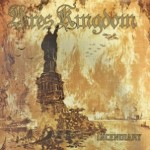 There is a certain door that any contemporary thrash band seeking quality must go through, a certain threshold that requires imagination and the indispensable talents of assimilation to really cross; in metal today, we see countless fragile trends that depend upon a rigid nostalgia and a lifeless worship of what has already happened, fully ignorant of the fact that what has true staying power is never something that was an idle imitation of something that was actually born of genius. In contrast to these bands, specifically the ones which belong to the so-called ‘retro-thrash’ trend, Ares Kingdom is of the opposite mindset; Ares Kingdom does not want to merely copy its primary influences, but to implement and authentically incorporate these influences into a relatively bold and forward-looking composition. The basic idea of Incendiary is quite simple: destroy the phoenix so that she may be reborn, an idea which is not so far from the opening narration of the Destroyer 666 track, Rise of the Predator. The execution, on the other hand, is what brings the band closer to actually demonstrating this vision than any other insignificant band that elects to portray death and apocalypse for aesthetic reasons alone; from the dismal album artwork to the indifference in Alex’s vocals, from the sad, painful melodies to the caustic and fiery riffs and solos that Chuck Keller (Order From Chaos) delivers, the listener can derive a sure sense of impending, even immediate doom. In conclusion, Ares Kingdom is not your average headbangin’, beer-swillin’, hell-worshipping thrash metal; ‘Incendiary’ offers us all the pace and vigour of the classic eighties bands, only it is properly assimilated and raised to a higher level through the cold visage of death metal and the individual imagination of the album’s creators. While sacrificing a bit of the rampant speed of the earlier recordings, ‘Incendiary’ compensates with a thoughtful development that is essential in allowing the band to convey its dark, apocalyptic vision; in other words, through the utility of a confident and dynamic mindset, Ares Kingdom has defiantly revealed a genuine idea independent of its forebears, and in so doing has crossed the threshold that has left so many inferior bands begging at the door.
There is a certain door that any contemporary thrash band seeking quality must go through, a certain threshold that requires imagination and the indispensable talents of assimilation to really cross; in metal today, we see countless fragile trends that depend upon a rigid nostalgia and a lifeless worship of what has already happened, fully ignorant of the fact that what has true staying power is never something that was an idle imitation of something that was actually born of genius. In contrast to these bands, specifically the ones which belong to the so-called ‘retro-thrash’ trend, Ares Kingdom is of the opposite mindset; Ares Kingdom does not want to merely copy its primary influences, but to implement and authentically incorporate these influences into a relatively bold and forward-looking composition. The basic idea of Incendiary is quite simple: destroy the phoenix so that she may be reborn, an idea which is not so far from the opening narration of the Destroyer 666 track, Rise of the Predator. The execution, on the other hand, is what brings the band closer to actually demonstrating this vision than any other insignificant band that elects to portray death and apocalypse for aesthetic reasons alone; from the dismal album artwork to the indifference in Alex’s vocals, from the sad, painful melodies to the caustic and fiery riffs and solos that Chuck Keller (Order From Chaos) delivers, the listener can derive a sure sense of impending, even immediate doom. In conclusion, Ares Kingdom is not your average headbangin’, beer-swillin’, hell-worshipping thrash metal; ‘Incendiary’ offers us all the pace and vigour of the classic eighties bands, only it is properly assimilated and raised to a higher level through the cold visage of death metal and the individual imagination of the album’s creators. While sacrificing a bit of the rampant speed of the earlier recordings, ‘Incendiary’ compensates with a thoughtful development that is essential in allowing the band to convey its dark, apocalyptic vision; in other words, through the utility of a confident and dynamic mindset, Ares Kingdom has defiantly revealed a genuine idea independent of its forebears, and in so doing has crossed the threshold that has left so many inferior bands begging at the door.
–Xavier
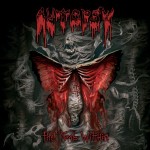 Of the artists who remain from times past, under whose names were unleashed the most disturbing and poignant sounds that defined Death Metal, Autopsy belong to a radical minority in rejecting the expectations of the contemporary audience and find their way back to the essence of their own sound on pure instinct alone. While the last couple of years has seen a rising of undead hordes practicing the ancient forms in a global campaign to transcend the pollutant mainstreamification of Death Metal, very few of these bands have really unlocked the primal secrets which were channelled into every classic of the old school – the dynamics of energy and the implementation within a brutal-violent, hysteric-emotional or transcendental-contemplative narrative, which the veteran likes of Asphyx, Autopsy and Goreaphobia have all recently demonstrated. The simple, largely hysteric level that The Tomb Within operates on makes it a powerful exercise of a seamless compositional style that is completely shaped by a savage state of consciousness, unintelligent yet impulsively aware of it’s own imminent death. Like an onrush of blood pumped through contracting arteries, guitars portray the frantic inner drama of one of Dr. Herbert West’s re-animations, diametrically opposed to his precise formulations regarding post-mortem. Atonal layering in the manner of Slayer’s more pathological works increases tension during these surging passages, punctuated by lead guitars that put to rest any hope of sanity returning. The trademark sludginess of Autopsy’s sound comes from instruments that are seemingly encased in adipocere, retaining within them all the character of their most memorable titles; not aspiring for a modern, clinical definition to their riffs but instead emphasising the rhythmic flow of energy in order to convey the sensations and suffocating experience of mortal dread. The band finds the balance once again of deathly force and doomy realisations as slower riffs offset the hysteria with tollings of morbid heaviness and an inescapable fate. Though Autopsy have stripped Death Metal to an essential skeletal frame, with the added simplicity of a horror movie-like thematic approach, this EP brings a much needed dimension of fear and madness to a world obsessed with ‘zombie horror’ as a populist, retro-hipster, marketing aesthetic.
Of the artists who remain from times past, under whose names were unleashed the most disturbing and poignant sounds that defined Death Metal, Autopsy belong to a radical minority in rejecting the expectations of the contemporary audience and find their way back to the essence of their own sound on pure instinct alone. While the last couple of years has seen a rising of undead hordes practicing the ancient forms in a global campaign to transcend the pollutant mainstreamification of Death Metal, very few of these bands have really unlocked the primal secrets which were channelled into every classic of the old school – the dynamics of energy and the implementation within a brutal-violent, hysteric-emotional or transcendental-contemplative narrative, which the veteran likes of Asphyx, Autopsy and Goreaphobia have all recently demonstrated. The simple, largely hysteric level that The Tomb Within operates on makes it a powerful exercise of a seamless compositional style that is completely shaped by a savage state of consciousness, unintelligent yet impulsively aware of it’s own imminent death. Like an onrush of blood pumped through contracting arteries, guitars portray the frantic inner drama of one of Dr. Herbert West’s re-animations, diametrically opposed to his precise formulations regarding post-mortem. Atonal layering in the manner of Slayer’s more pathological works increases tension during these surging passages, punctuated by lead guitars that put to rest any hope of sanity returning. The trademark sludginess of Autopsy’s sound comes from instruments that are seemingly encased in adipocere, retaining within them all the character of their most memorable titles; not aspiring for a modern, clinical definition to their riffs but instead emphasising the rhythmic flow of energy in order to convey the sensations and suffocating experience of mortal dread. The band finds the balance once again of deathly force and doomy realisations as slower riffs offset the hysteria with tollings of morbid heaviness and an inescapable fate. Though Autopsy have stripped Death Metal to an essential skeletal frame, with the added simplicity of a horror movie-like thematic approach, this EP brings a much needed dimension of fear and madness to a world obsessed with ‘zombie horror’ as a populist, retro-hipster, marketing aesthetic.
–ObscuraHessian
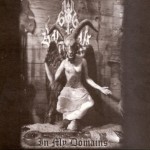 Another excellent tonal poem by this Mexican symphonic horde sees a sense of orchestration and riff balance that has all the consistency of ‘The Key Of Throne‘ from 2004, though takes a deeper foray into the realm of cinematic, ambient orchestration that recalls what Summoning have been getting at for the last 15 years, mixed with the battle hardened epics of Lord Wind. This new turn in a more heavily instrumental form recalls what fellow countrymen The Chasm brought about in the form of last year’s Farseeing The Paranormal Abysm with a little less emphasis on the central role of vocals. Though rather than the syncretic, melodic death metal of their peers, Avzhia’s black metal assault owes it’s periphery to the best works of Emperor, Graveland, Ancient, Summoning and Xibalba, throwing them into a cohesive and bombastic mould. I would not say that this tops their previous full length, but this follow up is very worthy indeed and consolidates their status as one of the great torch bearers of what black metal stood to express, the embodiment of restoring mystical imagination in the listener.
Another excellent tonal poem by this Mexican symphonic horde sees a sense of orchestration and riff balance that has all the consistency of ‘The Key Of Throne‘ from 2004, though takes a deeper foray into the realm of cinematic, ambient orchestration that recalls what Summoning have been getting at for the last 15 years, mixed with the battle hardened epics of Lord Wind. This new turn in a more heavily instrumental form recalls what fellow countrymen The Chasm brought about in the form of last year’s Farseeing The Paranormal Abysm with a little less emphasis on the central role of vocals. Though rather than the syncretic, melodic death metal of their peers, Avzhia’s black metal assault owes it’s periphery to the best works of Emperor, Graveland, Ancient, Summoning and Xibalba, throwing them into a cohesive and bombastic mould. I would not say that this tops their previous full length, but this follow up is very worthy indeed and consolidates their status as one of the great torch bearers of what black metal stood to express, the embodiment of restoring mystical imagination in the listener.
–Pearson
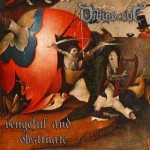
See review here.
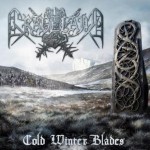 The unstoppable Rob Darken took again some time from swordfights and armour forging to take a look at the barbaric-modernist thematic system devised by composers such as Richard Wagner and Basil Poledouris, with a metallic energetic pulse rarely witnessed since Following the Voice of Blood; the last of the fast Graveland albums. The lack of Capricornus hardly matters because the authentic or perfectly synthesized drumkit recalls the same Celtic tribal warmarches and the raw, unsymmetric heartbeat of a primal man hunted by wolves, perfectly countered by the dark druid’s usual cold and hardened vocal delivery. A deeply neo-classical realization how to build heaviness through doomy speeds and chordal supplements still elevates the Polish seeker-initiator into a force far beyond today’s puny black and heathen metal “royalty”, looming beyond as a frightening presence of unrealized wisdom; nothing less than the Manowar of black metal, with no hint of irony or self-loathing. There exist two directions of expansion since the ethereal melodic chime of alfar nature in “From the Beginning of Time” is Summoning-esque (“Spear of Wotan” even features a variation of the “Marching Homewards” melody) while the harmonic perception takes a sudden dive into folkloric origins in the proto-rock riffing of “White Winged Hussary”, reminiscent of the most “redneckish” moments of the early albums. No essential component has been changed in a decade of work, but slight improvements of formula keep the mystically oriented listener spinning towards the distantly heard croaking ravens that herald the upcoming axe age, one that shall bless our corrupted world with a merciful blow from Wotan’s spear of un-death.
The unstoppable Rob Darken took again some time from swordfights and armour forging to take a look at the barbaric-modernist thematic system devised by composers such as Richard Wagner and Basil Poledouris, with a metallic energetic pulse rarely witnessed since Following the Voice of Blood; the last of the fast Graveland albums. The lack of Capricornus hardly matters because the authentic or perfectly synthesized drumkit recalls the same Celtic tribal warmarches and the raw, unsymmetric heartbeat of a primal man hunted by wolves, perfectly countered by the dark druid’s usual cold and hardened vocal delivery. A deeply neo-classical realization how to build heaviness through doomy speeds and chordal supplements still elevates the Polish seeker-initiator into a force far beyond today’s puny black and heathen metal “royalty”, looming beyond as a frightening presence of unrealized wisdom; nothing less than the Manowar of black metal, with no hint of irony or self-loathing. There exist two directions of expansion since the ethereal melodic chime of alfar nature in “From the Beginning of Time” is Summoning-esque (“Spear of Wotan” even features a variation of the “Marching Homewards” melody) while the harmonic perception takes a sudden dive into folkloric origins in the proto-rock riffing of “White Winged Hussary”, reminiscent of the most “redneckish” moments of the early albums. No essential component has been changed in a decade of work, but slight improvements of formula keep the mystically oriented listener spinning towards the distantly heard croaking ravens that herald the upcoming axe age, one that shall bless our corrupted world with a merciful blow from Wotan’s spear of un-death.
–Devamitra
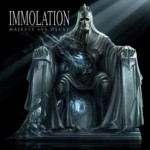
See review here.
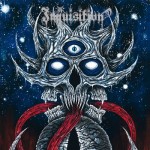 Recent history has borne witness to developments in Black Metal that sets the music more at war against itself than with it’s traditional enemies and time has accumulated vast quantities of debris resulting from this internal crisis of identity and credibility. The shape of all the rubble is appropriately rocky, resembling the multitude of “fairy land” daydreams based on genres of alternative popular music incorporated to gain the approval of outsiders who possess no more understanding of the wolfish, warlike and mystic poetry of Black Metal’s spiritual essence, but want to claim this ‘niche market’ as their own. Even the cloak of demonic symbology, long-since regarded as a joke to even the casual listener – little more than a generic garb for posturing and associating with the genre’s ancestors – has been accordingly stripped of all occultic luminance, which shined too fiercely over the eyes of the humanist infiltrator, such that the tears of depressive-suicidal ideologies would instantly evaporate. None of these signs of the times, however, have influenced the veteran duo of Dagon and Incubus, who, in an ultimate statement of Satanic zealotry and inhuman purity, tunnel back to the hypnotic primitivism of Black Metal’s first waves, re-formulating and refining the style of early Bathory to produce an album that reveals the inherent mystical wisdom which inspires Black Metal’s sinister imagery, with no recourse to obvious cliches nor over-intellectualisations in order to clutch at some idea of artistic credibility and potency. Based on the technique of Immortal’s ‘Pure Holocaust‘, Inquisition craft expansive yet blasting soundscapes from swirling portals of riffing immediately reminiscent of ‘The Return……‘ by Bathory in it’s Punkish brevity. These are inflected by dissonant open-chords and all manner of string-bending and sliding chaos to create a legitimate sense of increasing cosmic awareness and trans-dimensional ascension, as they circulate around each song’s central melody in a bizzarely motivic fashion. This is a component that bands such as Blut Aus Nord, who aspire to embellish their songs in such an experimental way, simply do not possess. Even the most meandering of arpeggiated open-chords don’t feel derivative as they sound out powerful and song-defining melodies rather than merely filling out time and space. Similarly to fellow Latin Americans Avzhia, Inquisition create a total sense of grandeur by bringing songs to an apex of expression through essentially simple but epic power-chord riffs. The masterful percussive transitions of Incubus guide the album fluidly between the various evolutionary elements of Inquisition’s sound, from the majestically crashing and pounding cadences of Burzum to the rolling avalanche of Immortal. Ominous Doctrines of the Perpetual Mystical Macrocosm is in many ways the album that the Blashyrkh horde should have recorded instead of ‘All Shall Fall’, as even Dagon’s toneless chanting style is somehow more expressive than past vocalisations in its similarity to Abbath. But all comparisons aside, there is no doubt as to which band reigns the Black Metal underground almost alone these days as Inquisition have created another uncompromising and profound work that no other so-called Satanists have the power to match.
Recent history has borne witness to developments in Black Metal that sets the music more at war against itself than with it’s traditional enemies and time has accumulated vast quantities of debris resulting from this internal crisis of identity and credibility. The shape of all the rubble is appropriately rocky, resembling the multitude of “fairy land” daydreams based on genres of alternative popular music incorporated to gain the approval of outsiders who possess no more understanding of the wolfish, warlike and mystic poetry of Black Metal’s spiritual essence, but want to claim this ‘niche market’ as their own. Even the cloak of demonic symbology, long-since regarded as a joke to even the casual listener – little more than a generic garb for posturing and associating with the genre’s ancestors – has been accordingly stripped of all occultic luminance, which shined too fiercely over the eyes of the humanist infiltrator, such that the tears of depressive-suicidal ideologies would instantly evaporate. None of these signs of the times, however, have influenced the veteran duo of Dagon and Incubus, who, in an ultimate statement of Satanic zealotry and inhuman purity, tunnel back to the hypnotic primitivism of Black Metal’s first waves, re-formulating and refining the style of early Bathory to produce an album that reveals the inherent mystical wisdom which inspires Black Metal’s sinister imagery, with no recourse to obvious cliches nor over-intellectualisations in order to clutch at some idea of artistic credibility and potency. Based on the technique of Immortal’s ‘Pure Holocaust‘, Inquisition craft expansive yet blasting soundscapes from swirling portals of riffing immediately reminiscent of ‘The Return……‘ by Bathory in it’s Punkish brevity. These are inflected by dissonant open-chords and all manner of string-bending and sliding chaos to create a legitimate sense of increasing cosmic awareness and trans-dimensional ascension, as they circulate around each song’s central melody in a bizzarely motivic fashion. This is a component that bands such as Blut Aus Nord, who aspire to embellish their songs in such an experimental way, simply do not possess. Even the most meandering of arpeggiated open-chords don’t feel derivative as they sound out powerful and song-defining melodies rather than merely filling out time and space. Similarly to fellow Latin Americans Avzhia, Inquisition create a total sense of grandeur by bringing songs to an apex of expression through essentially simple but epic power-chord riffs. The masterful percussive transitions of Incubus guide the album fluidly between the various evolutionary elements of Inquisition’s sound, from the majestically crashing and pounding cadences of Burzum to the rolling avalanche of Immortal. Ominous Doctrines of the Perpetual Mystical Macrocosm is in many ways the album that the Blashyrkh horde should have recorded instead of ‘All Shall Fall’, as even Dagon’s toneless chanting style is somehow more expressive than past vocalisations in its similarity to Abbath. But all comparisons aside, there is no doubt as to which band reigns the Black Metal underground almost alone these days as Inquisition have created another uncompromising and profound work that no other so-called Satanists have the power to match.
–ObscuraHessian
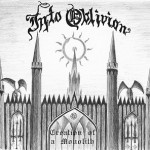
See review here.
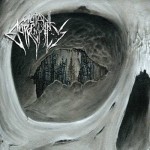 The New York City borough of Brooklyn might be better known to the universal consciousness as “The Hipster Capital of the World”, “A Fantastic Place to Collect STDs”, or “Where Culture Goes to be Sodomized”, amongst other colorful and imaginative epithets. Naturally, any self-touting Metal bands originating from this region ought to be approached with utmost scrutiny, as these are all almost invariably revealed to be alternative rock acts hiding beneath a masquerade of long hair and Dionysian discord. Breaking decisively away from this brand of perfidious whoredom are nouveau death metallers Mutant Supremacy, who occupy a peculiar nexus in between Monstrosity, Dismember, and Infester — thus setting them apart from the archetypal NYDM style as well. Seemingly fueled by an intense hatred for the free-loving cosmopolitanism that surrounds them, this band constructs theatrically explosive war-anthems conceptualized around a post-nuclear-apocalyptic Hell on Earth, rife with Thrasymachan rhetoric, biological abominations, and grisly accounts of human extermination. Songwriting on this debut mostly shows a clean-cut and sharp sense of narration clearly indicative of a studied discipline in the arts of classic Slayer, although there are a few odd weak moments where stylistic confusion vomits forth a spate of old school clichés and uncompelling Flori-death/Swe-death/British Grindcore aggregates. Overall, however, there is certainly something refreshingly violent in development here, and it’s a victory to hear such a proud death knell coming from what is otherwise an utterly syphilis-addled portion of the planet.
The New York City borough of Brooklyn might be better known to the universal consciousness as “The Hipster Capital of the World”, “A Fantastic Place to Collect STDs”, or “Where Culture Goes to be Sodomized”, amongst other colorful and imaginative epithets. Naturally, any self-touting Metal bands originating from this region ought to be approached with utmost scrutiny, as these are all almost invariably revealed to be alternative rock acts hiding beneath a masquerade of long hair and Dionysian discord. Breaking decisively away from this brand of perfidious whoredom are nouveau death metallers Mutant Supremacy, who occupy a peculiar nexus in between Monstrosity, Dismember, and Infester — thus setting them apart from the archetypal NYDM style as well. Seemingly fueled by an intense hatred for the free-loving cosmopolitanism that surrounds them, this band constructs theatrically explosive war-anthems conceptualized around a post-nuclear-apocalyptic Hell on Earth, rife with Thrasymachan rhetoric, biological abominations, and grisly accounts of human extermination. Songwriting on this debut mostly shows a clean-cut and sharp sense of narration clearly indicative of a studied discipline in the arts of classic Slayer, although there are a few odd weak moments where stylistic confusion vomits forth a spate of old school clichés and uncompelling Flori-death/Swe-death/British Grindcore aggregates. Overall, however, there is certainly something refreshingly violent in development here, and it’s a victory to hear such a proud death knell coming from what is otherwise an utterly syphilis-addled portion of the planet.
–Thanatotron
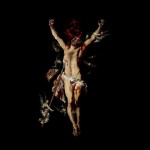 True to form, Profanatica release a focused, energetic and iconoclastic opus that shatters and mocks any infantile and moralistic conception of reality. Both compositionally and aesthetically powerful, the production on Disgusting Blasphemies against God is both clear and full, lending itself nicely to an analysis of its subtleties and providing the clarity necessary to gain a chuckle at the expense of nearby spectators privy to the album’s intrusive vitriol. Ledney’s vocals are hilariously clear yet retain a threateningly violent quality that is becoming of this style of Black Metal. As Ledney vomits forth his blasphemic ritual, listeners are treated to a notably ominous musical atmosphere that is uncomfortably somber, deranged and challenging. Utilizing single note tremolo picking, reminiscent of a cross between a more consonant Havohej and the effective and simple melodies of VON, Ledney in is his genius, develops motifs, that while perhaps more obvious and accessible, remain potent and successfully create an intriguing state of anxiety. These motifs both seamlessly emerge from, and return to sinister Incantation style riffs which work together to develop a unity and structural coherence that while primal and simple is undoubtedly effective. The interplay between these musical variable creates an overall experience that portends the celebration of the powerful, living and animated chthonic mysteries and perhaps more pressingly the apotheosis of their necessary destructive capacities.
True to form, Profanatica release a focused, energetic and iconoclastic opus that shatters and mocks any infantile and moralistic conception of reality. Both compositionally and aesthetically powerful, the production on Disgusting Blasphemies against God is both clear and full, lending itself nicely to an analysis of its subtleties and providing the clarity necessary to gain a chuckle at the expense of nearby spectators privy to the album’s intrusive vitriol. Ledney’s vocals are hilariously clear yet retain a threateningly violent quality that is becoming of this style of Black Metal. As Ledney vomits forth his blasphemic ritual, listeners are treated to a notably ominous musical atmosphere that is uncomfortably somber, deranged and challenging. Utilizing single note tremolo picking, reminiscent of a cross between a more consonant Havohej and the effective and simple melodies of VON, Ledney in is his genius, develops motifs, that while perhaps more obvious and accessible, remain potent and successfully create an intriguing state of anxiety. These motifs both seamlessly emerge from, and return to sinister Incantation style riffs which work together to develop a unity and structural coherence that while primal and simple is undoubtedly effective. The interplay between these musical variable creates an overall experience that portends the celebration of the powerful, living and animated chthonic mysteries and perhaps more pressingly the apotheosis of their necessary destructive capacities.
–TheWaters
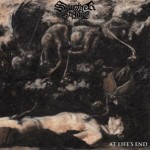 Toronto’s death dealers unearth the forgotten formulas of 80s-90s extreme metal in their second offering, a follow-up to the debut cassette “A Litany of Vileness”. This punk-driven death metal statement delivered by veterans of Canadian scene (former members of The Endless Blockade and Rammer) shows no mercy: it is short, volatile and dirty. Yet, at the same time the material is well weighed and balanced, blessed with the genuine feel of old-school art. The production helps conveying old metal nostalgia whereas Spartan songwriting confronts useless acrobatic tendencies of the modern scene. The band’s uncompromising music is perfectly collaborated with artwork by Moscow artist Denis Kostromitin. Standing on the shoulders of giants like Autopsy, Carnage, Pestilence, Repulsion and Discharge these reapers managed to find a voice of their own. We can only hope that this beautifully presented vinyl-only release is a “carnal promise” of Slaughter Strike’s prospects.
Toronto’s death dealers unearth the forgotten formulas of 80s-90s extreme metal in their second offering, a follow-up to the debut cassette “A Litany of Vileness”. This punk-driven death metal statement delivered by veterans of Canadian scene (former members of The Endless Blockade and Rammer) shows no mercy: it is short, volatile and dirty. Yet, at the same time the material is well weighed and balanced, blessed with the genuine feel of old-school art. The production helps conveying old metal nostalgia whereas Spartan songwriting confronts useless acrobatic tendencies of the modern scene. The band’s uncompromising music is perfectly collaborated with artwork by Moscow artist Denis Kostromitin. Standing on the shoulders of giants like Autopsy, Carnage, Pestilence, Repulsion and Discharge these reapers managed to find a voice of their own. We can only hope that this beautifully presented vinyl-only release is a “carnal promise” of Slaughter Strike’s prospects.
–The Eye in the Smoke
1 Comment
Tags: 2010, Australian Death Metal, best of, Black Metal, Canadian Black Metal, Canadian Death Metal, Columbian Black Metal, Florida Death Metal, Mexican Black Metal, New York Death Metal, Pagan Metal, Polish Black Metal, Texan Death Metal, To do: update DM review links, USBM, zine-reviews
Malevolent Creation – Unreleased 1987 Album
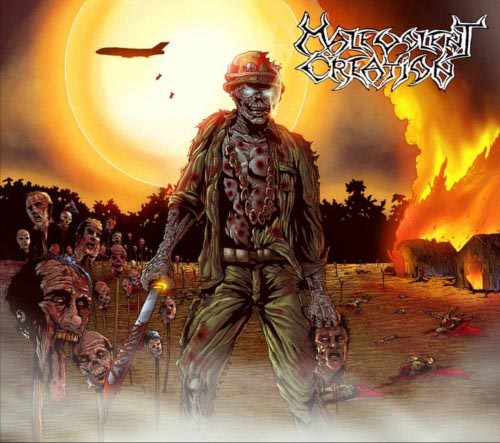 Production: The first three tracks showcase the studio work of Jim Nickles, and make the latter three, which are awful tape-grade garage production, sound like a middling 1990s studio with moderate volume, good tone, and reasonable bass. For the most part, he’s album to separate the instruments, which avoids the kind of washout frequent in recordings of this era.
Production: The first three tracks showcase the studio work of Jim Nickles, and make the latter three, which are awful tape-grade garage production, sound like a middling 1990s studio with moderate volume, good tone, and reasonable bass. For the most part, he’s album to separate the instruments, which avoids the kind of washout frequent in recordings of this era.
Review: Before they were a thunderous death metal band, Malevolent Creation started out as a late speed metal band in the style of Slayer’s “Aggressive Perfector” matured a few years with influences from Metallica, Massacra and Sepultura. Unlike most early death metal bands who sound like primitive chromatic punk making warrior metal, this three-song 1987 garage recording shows us a sound comparable to Artillery, Devastation and Nuclear Assault or any other second-tier bands that lacked the rock sensibilities of Metallica but borrowed their technique to mix into a Slayer/GBH fueled frenzy. Riffs are short and use rhythm more than phrase in the death metal style, and like other speed metal bands, Malevolent Creation use catchy bouncy choruses which repeat the song title multiple times. Their verse riffs are more in the Slayer school, and their choruses more the Metallica style of broad intervals permitting harmonization, which creates space for lead guitar and vocal melody. Had they continued in this direction, Malevolent Creation would be a promising power metal band today. The first track, “Sacrificial Annihilation,” is a pure speed blur that calls to mind early Nuclear Assault; “The Traitor Must Pay” follows with familiar pieces of music from Malevolent Creation’s first album, and sounds like Slayer crashing into Massacra; finally, “Confirmed Kill” borrows a Metallica chord progression and puts it to good use. It’s good to see this historical document riding again so the rest of us can explore the genesis of Malevolent Creation.
No CommentsTags: Malevolent Creation, review
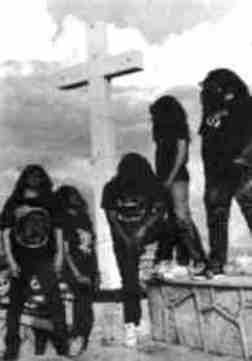 1. Introduction
1. Introduction
2. A desert walk
3. Nahuatli steel
4. Pactum: M.O.D.L.
5. Mortuary: Blackened Images
6. Transmetal: Amanecer en el Mausuleo
7. Cenotaph: Riding Our Black Oceans
8. Shub Niggurath: The Kinglike Celebration
9. Sargatanas: The Enlightenment
10. Aztec rites of darkness
11. Xibalba: Ah Dzam Poop Ek
12. Funereal Moon: Beneath the Cursed Light…
13. Avzhia: The Key of Throne
14. Demolish: Remembering the Cabalisticae Laments
15. Argentum: Ad Interitum Funebrarum
16. The Chasm: Conjuration of the Spectral Empire
17. The resurrection of the necrocults
18. Necroccultus: Encircling the Mysterious Necrorevelation
19. Yaotl Mictlan: Guerreros de la Tierra de los Muertos
20. Infinitum Obscure: Sub Atris Caelis
21. Denial: Catacombs of the Grotesque
Written by Devamitra, ObscuraHessian, Pearson and Xavier with Eduardo (Shub Niggurath / Necroccultus), Demogorgon (Avzhia), Marco (Xibalba) and Joel (Mortuary)
In Mexico the god appears; thy banner is unfolded in all directions, and no one weeps.

Goedel’s law tells us that no logical system can anticipate all of the demands of reality, because reality as an inarticulated mass of events and causes is naturally bigger in scope than any description of reality. The fallout from this is that every society loves to have a no man’s land, an anarchy zone and a lawless frontier. It’s hard to talk of Mexico as a singular entity when it is comprises so much more. It’s a former Spanish colony, containing the vestiges of two of the greatest empires to walk the earth — the Aztec and Maya, both of whom were warlike, enjoyed human sacrifice, and compiled more learning that any modern group would voluntarily undertake. In addition, it’s also part very learned place, part chaotic third-world disaster, and part anarchy zone. From this ferment comes some of the best metal to grace the earth. After Scandinavia and the US, Mexico produces the most quality underground music. And even more, the Mexican bands seem to “get it”: they can reconcile a nihilistic morality, technological warfare and even gutter-level fighting sensibilities with the arch, elegant and imposing formality and bravery of the past.
Muerte. That word, in Mexican art, embodies religious and historical streams of life so much more than the anglosphere’s clinically worldly emphasis on death as medical phenomenon. This muerte is a gate to antiquity, a divine storm, a holy mystery – contemplation of its secrets connects the Catholic superstition, still so powerful and affecting to common people, to the cruel and decadent rituals of the Toltecs and Olmecs, when no purpose higher could be envisioned than to bleed for the gods. Glimpses into Mexican tradition most often involve the morbid signature of supernatural belief in a strange form of unearthly life, represented by the skull worship of the Day of the Dead and the various devil masks and bizarre colourful monsters decorating the fiestas, as in embodiment of death metal aphorisms such as “the past is alive”.
 It would be fairly easy and obvious to point out social ills, crime rates and poverty as motivating factors for religiously oriented fatalistic thoughts, but for the psychologist and the occultist the pathology of the morbid mind is not only a reaction, it is also a cause itself, deeply ingrained in behavior and culture. To go into this sphere in depth would require another kind of a broader study and it is hardly of interest to most of our readers, so we shall mostly be occupied with the mythical, visionary image of Mexico, closest to us who are far away. It is the land of the eagle and the scorpion, of the peyote cactus and tropical steam, of the sea and the canyon. As we see everywhere in the world, the landscape becomes the structure of the mind, which gives life to stories and archetypes showing the apparent chaotic complexity of nature in symmetrical solutions. And musically, what can offer better representations of the occult-mathematical beauty of life than the hymnals of muerte: Death Metal and Black Metal?
It would be fairly easy and obvious to point out social ills, crime rates and poverty as motivating factors for religiously oriented fatalistic thoughts, but for the psychologist and the occultist the pathology of the morbid mind is not only a reaction, it is also a cause itself, deeply ingrained in behavior and culture. To go into this sphere in depth would require another kind of a broader study and it is hardly of interest to most of our readers, so we shall mostly be occupied with the mythical, visionary image of Mexico, closest to us who are far away. It is the land of the eagle and the scorpion, of the peyote cactus and tropical steam, of the sea and the canyon. As we see everywhere in the world, the landscape becomes the structure of the mind, which gives life to stories and archetypes showing the apparent chaotic complexity of nature in symmetrical solutions. And musically, what can offer better representations of the occult-mathematical beauty of life than the hymnals of muerte: Death Metal and Black Metal?
To this day, Mexico has not produced vapid mainstream metal sensations nor hard rock imitations to speak of, at least not ones that would have entered our awareness. It’s as if the inward drawn nacional spirit shuns the idea of establishing false identities and masks of life through exports, but instead entertains the Mexicans with whatever art or entertainment the local masses wish to be produced – but this is a realm mostly obscure to outsiders. Even in order to scratch the surface of Mexican rock and metal, one needs to stress the importance of such luminaries as Luzbel and Transmetal, names mostly unknown even in cult metal collector circles. As a more recent example, the astral and progressive death metal of The Chasm has certainly been gathering well deserved praise and attention in the underground, but as a phenomenon it’s still far from gracing the cover in Terrorizer or Decibel magazine.
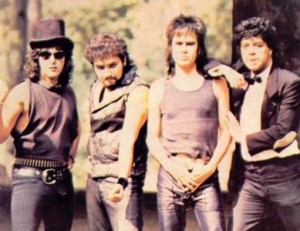 As the youth of the world tripped in the pseudo-spiritual chemical bliss of the 60′s, the seeds were sown in Mexico as well with an interest towards Rock music merged with esoteric and mystical themes, but true to its violent century, the nation oppressed its bravest minds, declaring them “communist”. Thus was quenched the initial surge of Heavy Metal, as clubs were closed, magazines censored and subversive content in radios minimized. Everywhere else the initial 70′s where the pivotal time for the realization of all kinds of “satanic” and “occult” music manifestations, so in the case of Mexico it took at least a decade to recover from vandalism espoused by the government.
As the youth of the world tripped in the pseudo-spiritual chemical bliss of the 60′s, the seeds were sown in Mexico as well with an interest towards Rock music merged with esoteric and mystical themes, but true to its violent century, the nation oppressed its bravest minds, declaring them “communist”. Thus was quenched the initial surge of Heavy Metal, as clubs were closed, magazines censored and subversive content in radios minimized. Everywhere else the initial 70′s where the pivotal time for the realization of all kinds of “satanic” and “occult” music manifestations, so in the case of Mexico it took at least a decade to recover from vandalism espoused by the government.
As the wave of Americanization hit Mexican youth culture in the early 80′s, it was inevitable that some unique voices would rise against manipulation and show their own kind of “metal mass”, inflected with the Catholic superstitions and violent streets they saw all around them with innocent, idealistic eyes. Two names especially can not go unmentioned: the original thrashers Death Warrant from Ciudad Juarez and the more classical but frighteningly psychic Luzbel from Mexico City, one of the greatest metal institutions to rise from the sand of Mexico and a prophet of Doom Metal themes and aspirations.
Huizar, the maniac behind Luzbel, managed to also put forth with his comrades at Escuadron Metalico label a series of compilations which in the mid-80′s showed the sounds of the new metal generation inspired by, mainly, American thrash metal and European speed metal. These “Proyecto” vinyls featured Transmetal, Ramses, Six Beer and practically everyone else who dominated the end of the 80′s when finally Mexican metal was too strong to be quenched by sporadic police raids and random accusations of blasphemy and iniquity. These troubles were akin to an anvil upon which the hammer of the light bringer shaped and pounded the minds that were to break free of the shackles of social upbringing and even “humanness” itself.
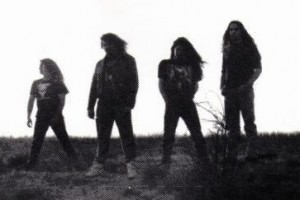 Eduardo: Well, to have a live appearance was not easy at all, because many people in Mexico (until this day) are a very difficult audience towards the Mexican bands. But we showed them that we were true about our ideals and that we gave 666% in every show! So we got the support of all the metalheads and they gave us in return a total storm of headbanging and full support. These were unforgettable moments to Shub Niggurath.
Eduardo: Well, to have a live appearance was not easy at all, because many people in Mexico (until this day) are a very difficult audience towards the Mexican bands. But we showed them that we were true about our ideals and that we gave 666% in every show! So we got the support of all the metalheads and they gave us in return a total storm of headbanging and full support. These were unforgettable moments to Shub Niggurath.
Joel: There was a small metal scene hungry to hear more extreme metal, so we always had great support from the beginning. I think there were more people supporting the scene than there is now supporting new metal bands, it’s a weird thing! Authority and “normal” people, as usual here, they didn’t understand our music. Sometimes the police were around looking to bother us, came up to the rehearsals and trying to get us, but never had luck, hahaha! And the people, those normal people, were the ones to send the police. I remember a show in Guadalajara or Leon in which the flyers had a circle in our logo and said: Watch out, Catholic, don’t assist! That was really funny.
Already before the decade was over, the most evil of the bands inspired by Thrash, namely Mortuary, Pactum, the inimitable Toxodeth and Transmetal (who tightened their sound album by album and still continue to do so after more than 20 years of career) had overtaken the gap between the international underground and the Mexican one. Suddenly the Judas Priest and Scorpions influence as the mainstream Mexican sound was replaced by a streetborn brutality and occult gore visions that would have made Slayer shudder. Studio and recording conditions were hardly ideal, but creating an easily digestible sound was hardly the intent of these iconoclasts, who repeated the slightly anterior efforts of the Brazilian scene in unleashing a torrent of noisy darkness easily mistaken for hardcore punk as the antithesis to forgetfulness and ignorance in adult human life.
Joel: Musically, our influences were basically Slayer, Venom, Possessed, Celtic Frost, and some classical masters. Lyrically important were the things inside my mind, my way to see this life, and obviously some great writers like Nietzsche, Poe and Lovecraft influenced us. Before Mortuary, each of us were playing in various bands songs of the bands that influenced us. When I was a child I studied some basic piano as well.
Eduardo: Also I had musical experience before Shub Niggurath: we created the Death Thrash Metal band called Tormentor. This was the origins for the unnameable abhorrence later known as Shub Niggurath.
 A mob of confusion, alike crawling insects, attacks the strings as early blasphemists Pactum struggle to make sense of violent, anti-religious ideas called forth by their satanic subconscious in Mexico City’s extreme response to Bathory and Sarcofago. While the anally raped vocalist rants meaninglessly on, the guitars manipulate suggestive, dischordant layers of picked notes and speedy runs that often sound chaotic but on a closer listen reveal an affinity with classical construction much like the early methods of Burzum and Ildjarn to call forth elegance from pieces of degeneration. Be it dissidence, incompetence or imagination that made Pactum to mangle the pieces of thrash they built upon nearly inrecognizable, the originality and harsh, spontaneous electric discharge that carries these songs onwards makes for a curious and surprising listen for those who are able to listen to the nearly unlistenable. In “M.O.D.L.” the band has discovered one of the valuable early lessons of black and death metal, that of desecrating the sanctity of rigid social structure by defying musical conventions and bringing the expression closer to the fractal noise of nature.
A mob of confusion, alike crawling insects, attacks the strings as early blasphemists Pactum struggle to make sense of violent, anti-religious ideas called forth by their satanic subconscious in Mexico City’s extreme response to Bathory and Sarcofago. While the anally raped vocalist rants meaninglessly on, the guitars manipulate suggestive, dischordant layers of picked notes and speedy runs that often sound chaotic but on a closer listen reveal an affinity with classical construction much like the early methods of Burzum and Ildjarn to call forth elegance from pieces of degeneration. Be it dissidence, incompetence or imagination that made Pactum to mangle the pieces of thrash they built upon nearly inrecognizable, the originality and harsh, spontaneous electric discharge that carries these songs onwards makes for a curious and surprising listen for those who are able to listen to the nearly unlistenable. In “M.O.D.L.” the band has discovered one of the valuable early lessons of black and death metal, that of desecrating the sanctity of rigid social structure by defying musical conventions and bringing the expression closer to the fractal noise of nature.
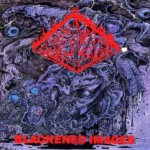 The elaborate and malign death metal of Mortuary is one of the most recognized funereal voices of early Mexican scene in cult circles and totally deservedly so, as the melodious and grinding old school sound hasn’t dated one bit but preserves the vital energy field of the times when death metal was not taken for granted, the quest for the ultimate density and sobriety. The rhythmic intensity brings to mind the debuts of Morbid Angel and Vader while the gloomy melody disposed as the interconnector of the more thrashing riffs is without question Central or South American in character (think: “INRI”). Joel Alanis’ voice escapes the trap that caused problems for many a thrasher, holding the rhythm of the syllables in position when reciting the blasphemies in English, and his powerful roar commands the fast, climactic and concise songs effortlessly to their logical conclusions. Even today Mortuary’s short but perfectly articulate album could serve as a protocol for building enjoyable but deep death metal, one that incites both head-banging and heart-scrutiny as the ultra-infectious “Reign of Dead” and “Asphyxiation” attack your brain with sensations from beyond and memories from the depths of the layers of mental programming.
The elaborate and malign death metal of Mortuary is one of the most recognized funereal voices of early Mexican scene in cult circles and totally deservedly so, as the melodious and grinding old school sound hasn’t dated one bit but preserves the vital energy field of the times when death metal was not taken for granted, the quest for the ultimate density and sobriety. The rhythmic intensity brings to mind the debuts of Morbid Angel and Vader while the gloomy melody disposed as the interconnector of the more thrashing riffs is without question Central or South American in character (think: “INRI”). Joel Alanis’ voice escapes the trap that caused problems for many a thrasher, holding the rhythm of the syllables in position when reciting the blasphemies in English, and his powerful roar commands the fast, climactic and concise songs effortlessly to their logical conclusions. Even today Mortuary’s short but perfectly articulate album could serve as a protocol for building enjoyable but deep death metal, one that incites both head-banging and heart-scrutiny as the ultra-infectious “Reign of Dead” and “Asphyxiation” attack your brain with sensations from beyond and memories from the depths of the layers of mental programming.
 As the inaugural saints of muerte spread their leathery wings over Michoacán and the 80′s were drawing to a close, Mexico’s silence was ruptured by these mangled, hellspawned shouts and nearly arbitrary riff structures envisioned by the scene’s godfathers Transmetal as the path leading to the aerie of the future. Simple and pitiless like a less experienced Sepultura or Slayer debut, this early collection sees Transmetal attempting to bludgeon their way through a barrage of speed metal in an endless call-and-response of rhythm riff and hoarse barking. Germans had invented most of these figures and refrains as early as 1984 but the untamed desert frontier of their homeland does bestow Transmetal with a rancor bringing it closer to the most subterranean and spontaenous garage punk bands that had the chance to practice their instruments on brief relapses from fighting social corruption. The sketchy but decisive melodies of “Temor a la Cruz” and “Fuerza Invisible” hardly represent an international or even local pinnacle of art, but they were enjoyed by a legion of punks and metalheads for their absolute breakup with the more mainstream appealing qualities of traditional heavy metal.
As the inaugural saints of muerte spread their leathery wings over Michoacán and the 80′s were drawing to a close, Mexico’s silence was ruptured by these mangled, hellspawned shouts and nearly arbitrary riff structures envisioned by the scene’s godfathers Transmetal as the path leading to the aerie of the future. Simple and pitiless like a less experienced Sepultura or Slayer debut, this early collection sees Transmetal attempting to bludgeon their way through a barrage of speed metal in an endless call-and-response of rhythm riff and hoarse barking. Germans had invented most of these figures and refrains as early as 1984 but the untamed desert frontier of their homeland does bestow Transmetal with a rancor bringing it closer to the most subterranean and spontaenous garage punk bands that had the chance to practice their instruments on brief relapses from fighting social corruption. The sketchy but decisive melodies of “Temor a la Cruz” and “Fuerza Invisible” hardly represent an international or even local pinnacle of art, but they were enjoyed by a legion of punks and metalheads for their absolute breakup with the more mainstream appealing qualities of traditional heavy metal.
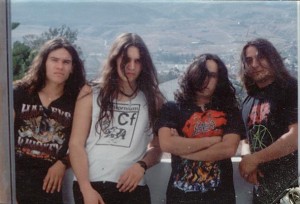 If there is a style of metal one thinks of in regards to Mexico, it must be Death Metal, in its brutal but most oblique forms, the sonic heir to Aztecs’ solar blood rites and Toltecs’ shadowy sorceries, an amalgamation of heretical thought inspired by Crowley and Lovecraft with a deep respect for the sacred and universal forces of nature which permeates the continuity of godforms in Catholic religious language in shades of traditional paganism which it overtook in surface but never in spirit. The first of these classics was undoubtedly Mortuary’s famous “Blackened Images” (also one of the earliest important Mexican releases sung in English) but no underground Death Metal maniac would forget the splendid, churning visions of Shub Niggurath (“Evilness and Darkness Prevails”, “The Kinglike Celebration”) or Sargatanas (“The Enlightenment”) either, not to mention the virile luminary Cenotaph (“The Gloomy Reflections of Our Hidden Sorrows”, “Riding Our Black Oceans”) whose lifeblood still runs in the veins of the most prized names of today’s underground (The Chasm, Denial and Hacavitz among others feature former Cenotaph members).
If there is a style of metal one thinks of in regards to Mexico, it must be Death Metal, in its brutal but most oblique forms, the sonic heir to Aztecs’ solar blood rites and Toltecs’ shadowy sorceries, an amalgamation of heretical thought inspired by Crowley and Lovecraft with a deep respect for the sacred and universal forces of nature which permeates the continuity of godforms in Catholic religious language in shades of traditional paganism which it overtook in surface but never in spirit. The first of these classics was undoubtedly Mortuary’s famous “Blackened Images” (also one of the earliest important Mexican releases sung in English) but no underground Death Metal maniac would forget the splendid, churning visions of Shub Niggurath (“Evilness and Darkness Prevails”, “The Kinglike Celebration”) or Sargatanas (“The Enlightenment”) either, not to mention the virile luminary Cenotaph (“The Gloomy Reflections of Our Hidden Sorrows”, “Riding Our Black Oceans”) whose lifeblood still runs in the veins of the most prized names of today’s underground (The Chasm, Denial and Hacavitz among others feature former Cenotaph members).
Demogorgon: Our ancient strain of blood has always been important to us, as on it are real human sacrifices and that is something we deeply connect with. We are proud of it and it deserves all of our respect. But anyway, we are mostly influenced by European Black Metal.
Joel: Definitely the legacy of our past has been influential in what we do, also the current situation in which the country has plunged. All the ups and downs of the past of our culture influence us directly or indirectly. The difference is the window from which we look at it, it’s definitely not the same as for the rest.
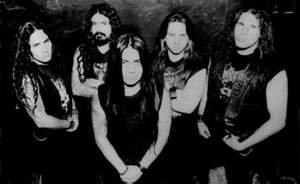 Eduardo: Mostly these bands’ message is about Death, destruction and occultism. If I’m not wrong, only Xibalba took our cultural roots into his concept – they even wrote “Unique Mayan Black” on their debut album. Cenotaph, Mortuary, Shub Niggurath, Tormentor, Deus Mortis, Deadly Dark, Necrophiliac and Pentagram among others were influenced by the Florida and Scandinavian scenes when they built Death Metal during the late 80′s and the early 90′s. My influences have always been bands like Morbid Angel, Deicide, Bathory (old), Sodom (old), Nihilist, Therion (demos), Thergothon, Winter, Necroschizma, Bolt Thrower, Slayer (old) and H.P. Lovecraft’s masterpieces. In Shub Niggurath, Arturo (who handled vocal invocations) was always in charge of the lyrical concept. Regarding “Evilness and Darkness Prevails” I only did the guitar solos, after that I had to leave the band. I have nothing to do with “The Kinglike Celebration” – for me this is not the real Shub Niggurath. For me, this was just some kind of project, without Arturo there, I am not sure about the result.
Eduardo: Mostly these bands’ message is about Death, destruction and occultism. If I’m not wrong, only Xibalba took our cultural roots into his concept – they even wrote “Unique Mayan Black” on their debut album. Cenotaph, Mortuary, Shub Niggurath, Tormentor, Deus Mortis, Deadly Dark, Necrophiliac and Pentagram among others were influenced by the Florida and Scandinavian scenes when they built Death Metal during the late 80′s and the early 90′s. My influences have always been bands like Morbid Angel, Deicide, Bathory (old), Sodom (old), Nihilist, Therion (demos), Thergothon, Winter, Necroschizma, Bolt Thrower, Slayer (old) and H.P. Lovecraft’s masterpieces. In Shub Niggurath, Arturo (who handled vocal invocations) was always in charge of the lyrical concept. Regarding “Evilness and Darkness Prevails” I only did the guitar solos, after that I had to leave the band. I have nothing to do with “The Kinglike Celebration” – for me this is not the real Shub Niggurath. For me, this was just some kind of project, without Arturo there, I am not sure about the result.
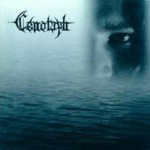 Coming off the back of an excellent debut in the form of ‘The Gloomy Reflections Of Our Hidden Sorrows’ and losing a prominent member in the form of Daniel Corchado, Mexican horde Cenotaph radically altered their sound aesthetically and showed a refinement of production and to a smaller extent, musical technique. Whereas the first full-length resembled a prototypical version of Nile, with an exotic though nonetheless esoteric and original take on New York death metal (think Incantation, Morpheus Descends), ‘Riding Our Black Oceans’ owes its musical framework, when speaking of instrumental technique, to European metal, most notably the first two albums of At The Gates, with a much more classicist approach to melody. With the outgoing of previous throatman Corchado a new vocal makes itself at home, not far from the tortured howls of Anders Friden. The same sense of aggression is also present in this work, but is less of a catharsis than the aforementioned Swedish band or the German act Atrocity, and has a motive towards evoking a nostalgic depth, rather than a psychological-emotional one. The percussion is chaotic and structurally brings to mind a more rigid and maze-like ‘Beneath The Remains’ by Sepultura, with more adventurous battery that evokes their ‘Morbid Visions’ record. Acoustic guitars embellish and interlock with these intricate arrangements, and are an obvious nod to Mediterranean and Southern European music. This stylistic admixture works brilliantly, rather than being a work that is merely imitative of an established style, it works the more obvious traits for its own ends, borrowing rather than copying. Cenotaph make a very distinct and profound work here, one of the finest releases to come out of Latin America.
Coming off the back of an excellent debut in the form of ‘The Gloomy Reflections Of Our Hidden Sorrows’ and losing a prominent member in the form of Daniel Corchado, Mexican horde Cenotaph radically altered their sound aesthetically and showed a refinement of production and to a smaller extent, musical technique. Whereas the first full-length resembled a prototypical version of Nile, with an exotic though nonetheless esoteric and original take on New York death metal (think Incantation, Morpheus Descends), ‘Riding Our Black Oceans’ owes its musical framework, when speaking of instrumental technique, to European metal, most notably the first two albums of At The Gates, with a much more classicist approach to melody. With the outgoing of previous throatman Corchado a new vocal makes itself at home, not far from the tortured howls of Anders Friden. The same sense of aggression is also present in this work, but is less of a catharsis than the aforementioned Swedish band or the German act Atrocity, and has a motive towards evoking a nostalgic depth, rather than a psychological-emotional one. The percussion is chaotic and structurally brings to mind a more rigid and maze-like ‘Beneath The Remains’ by Sepultura, with more adventurous battery that evokes their ‘Morbid Visions’ record. Acoustic guitars embellish and interlock with these intricate arrangements, and are an obvious nod to Mediterranean and Southern European music. This stylistic admixture works brilliantly, rather than being a work that is merely imitative of an established style, it works the more obvious traits for its own ends, borrowing rather than copying. Cenotaph make a very distinct and profound work here, one of the finest releases to come out of Latin America.
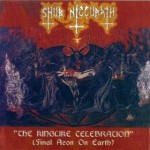 From the extra-dimensional plane of unspeakable horrors that’s revealed in our nightmares by black, arachnoid creatures, prying open our sub-conscious to witness terrible visions, comes this brutal classic of Lovecraftian Death Metal. As a later album in the old-school tradition, ‘The Kinglike Celebration’ has the strength of dynamic and coherent composition under the unmistakeably nefarious atmospheres that could only come from the first generation to be instructed by the likes of Possessed and Sepultura. Unlike more recent acts such as Portal that also delve into the Non-Euclidean realm of Howard Phillip, this work remains an highly geometric one, as if to frame the malevolent world of the Ancient Ones within the scope of human cognition, enabling the sensations of fear and awe and involuntary submission to the higher, evil will. The symmetrical structure of these songs oversee a central melodic theme being deconstructed with the horror of trembling and ominously churning, Deicidean riff-work that builds to a majestic revelation of cosmic power, usually embellished by eerie synths. From this expanse, the band reintroduces the central riff, re-contextualising it through powerful lead overlays and purposeful percussive and rhythmic enunciation, with the crescendo-inducing prowess of a Classical symphony. Shub-Niggurath advance the pulsating Slayerisms of Deicide’s first album to encompass thoughtful formulae of occult melodicism and awaken the unspeakable entities of the grand, cosmic hierachy.
From the extra-dimensional plane of unspeakable horrors that’s revealed in our nightmares by black, arachnoid creatures, prying open our sub-conscious to witness terrible visions, comes this brutal classic of Lovecraftian Death Metal. As a later album in the old-school tradition, ‘The Kinglike Celebration’ has the strength of dynamic and coherent composition under the unmistakeably nefarious atmospheres that could only come from the first generation to be instructed by the likes of Possessed and Sepultura. Unlike more recent acts such as Portal that also delve into the Non-Euclidean realm of Howard Phillip, this work remains an highly geometric one, as if to frame the malevolent world of the Ancient Ones within the scope of human cognition, enabling the sensations of fear and awe and involuntary submission to the higher, evil will. The symmetrical structure of these songs oversee a central melodic theme being deconstructed with the horror of trembling and ominously churning, Deicidean riff-work that builds to a majestic revelation of cosmic power, usually embellished by eerie synths. From this expanse, the band reintroduces the central riff, re-contextualising it through powerful lead overlays and purposeful percussive and rhythmic enunciation, with the crescendo-inducing prowess of a Classical symphony. Shub-Niggurath advance the pulsating Slayerisms of Deicide’s first album to encompass thoughtful formulae of occult melodicism and awaken the unspeakable entities of the grand, cosmic hierachy.
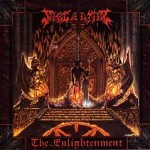 These blasphemers from Guadalajara were around as early as 1986 according to their biography. Only denizens of the infernal layers know what they must have sounded like back then, but their full length revelation is also nothing less than ancient and horrific, of deeply atmospheric and disturbed vision of extended, simple and dragging death metal torment. Shunning the eloquent melodies of Cenotaph and likewise the rhythmic energy of Mortuary, Sargatanas withdraws into ascetic and morbidly elongated tremolos pillared by blasphemous growls mostly maintaining the emotionless, yet commanding tone of satanic artifice, as a stone statue summoned to unholy life and crushing Christians with no haste or passionate compulsion – determinate, almost peaceful. The meditative quality is carried to the extreme in mid-paced or even slower songs such as “Fear and Suffering” or “The Proclamation” (featuring drum patterns motivated rather by ritual ambient than Dave Lombardo) making it even somewhat plodding. The band barely animates for a gloomy rendition of Possessed’s “Satan Curse” in a version that sounds like bubbling lava or tremors preceding an earthquake and one of the most delightful tracks on offer, the chaotic “Satanist” whose main riff recalls Rimsky-Korsakov’s “Flight of the Bumblebee” and as many other tracks on here, is seemingly randomly interrupted for a mock satanistic prayer. In any case, this inward bound attraction and solitude of vision will open only to deepest underground death metal cultists and fans of subtle terror based on psychological expectation and illogical mood cues, examples of which are found plenty in Mexican horror movies and early black metal in the vein of Samael and Barathrum, which undoubtedly heavily weigh on Sargatanas’ study list regardless of this band’s origins being placed even further back in the dimension of time.
These blasphemers from Guadalajara were around as early as 1986 according to their biography. Only denizens of the infernal layers know what they must have sounded like back then, but their full length revelation is also nothing less than ancient and horrific, of deeply atmospheric and disturbed vision of extended, simple and dragging death metal torment. Shunning the eloquent melodies of Cenotaph and likewise the rhythmic energy of Mortuary, Sargatanas withdraws into ascetic and morbidly elongated tremolos pillared by blasphemous growls mostly maintaining the emotionless, yet commanding tone of satanic artifice, as a stone statue summoned to unholy life and crushing Christians with no haste or passionate compulsion – determinate, almost peaceful. The meditative quality is carried to the extreme in mid-paced or even slower songs such as “Fear and Suffering” or “The Proclamation” (featuring drum patterns motivated rather by ritual ambient than Dave Lombardo) making it even somewhat plodding. The band barely animates for a gloomy rendition of Possessed’s “Satan Curse” in a version that sounds like bubbling lava or tremors preceding an earthquake and one of the most delightful tracks on offer, the chaotic “Satanist” whose main riff recalls Rimsky-Korsakov’s “Flight of the Bumblebee” and as many other tracks on here, is seemingly randomly interrupted for a mock satanistic prayer. In any case, this inward bound attraction and solitude of vision will open only to deepest underground death metal cultists and fans of subtle terror based on psychological expectation and illogical mood cues, examples of which are found plenty in Mexican horror movies and early black metal in the vein of Samael and Barathrum, which undoubtedly heavily weigh on Sargatanas’ study list regardless of this band’s origins being placed even further back in the dimension of time.
Without prior knowledge it would be easy to assume that the Black Metal biosphere of Mexico would have been overtaken by bulletbelted battalions fueled by alcohol and sexual lust, but instead some of the most purely mystical and meditative classics of the 90′s underground arose from under the wings of Guttural Records, the all time prime supporter of Mexican occult metal who still keeps cranking out occasional re-releases of material whose quality is, occasionally, simply beyond our dreams. To name some, if you have not heard the most moving moments of Xibalba, Avzhia, Funereal Moon and Shub Niggurath, you don’t know how astral and insane Black Metal can simultaneously be while resorting neither to “progressive” nor “raw” clichés, instead being alive with the fervent force of Mexican demons that feast on the souls of succumbed sorcerers, the experience and experiment being total.
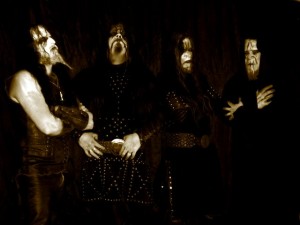 Marco: We have been listening to Metal music for a long, long time. We began by listening to a lot of ’70s bands (Purple, Priest, etc), we experienced the radical change and the explosion of the new bands from the ’80s (Venom, Bathory, etc.) and we just grew with the evolution of this music through the end of the ’80s and the beginning of the ’90s. I think all of this music has influenced us a lot. Books that have inspired us throughout all of this has been ancient literature from the pre-Hispanic cultures of our homeland – with special focus on the Mayan topics mainly, though we also like H.P. Lovecraft’s books. In those days, there were not many bands like us around. I remember that on the few gigs we had, some people were just staring at us, and some other were just enjoying the sound. It was really small and we just seem to get more attention from other countries than ours. Sometimes, regular people were inventing silly stories about bad things happening to them simply because we were about to play on that day. I don’t think the media was focused on this kind of extreme music back in those days, as it is now.
Marco: We have been listening to Metal music for a long, long time. We began by listening to a lot of ’70s bands (Purple, Priest, etc), we experienced the radical change and the explosion of the new bands from the ’80s (Venom, Bathory, etc.) and we just grew with the evolution of this music through the end of the ’80s and the beginning of the ’90s. I think all of this music has influenced us a lot. Books that have inspired us throughout all of this has been ancient literature from the pre-Hispanic cultures of our homeland – with special focus on the Mayan topics mainly, though we also like H.P. Lovecraft’s books. In those days, there were not many bands like us around. I remember that on the few gigs we had, some people were just staring at us, and some other were just enjoying the sound. It was really small and we just seem to get more attention from other countries than ours. Sometimes, regular people were inventing silly stories about bad things happening to them simply because we were about to play on that day. I don’t think the media was focused on this kind of extreme music back in those days, as it is now.
Demogorgon: Avzhia was formed with influence from Death, Thrash etc. Metal, absorbing and swallowing the blackest of these styles of Metal to form a dark and melancholic sound. Musically we were influenced by the old school of Black Metal, bands such as Bathory, Celtic Frost, Hellhammer, etc. and ideologically for example Emperor, Dissection, Satyricon, Black Crucifixion, Grand Belial’s Key, The Black, Tormentor, etc. We were never schooled musicians, we started doing it simply like we felt at the time in the earlier 90′s and we’re still doing music the same way. Avzhia was the only Black Metal band playing in the midst of a lot of Death Metal bands, we remember brutal mosh pits and hostility… so when Avzhia took the stage the audience seemed to be taken by a great fucking depression! In the early 90′s it was a big challenge to keep moving forward into the majestic world of Black Metal.
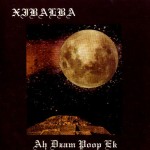 Like Cenotaph, but in the context of a Nordic black metal band, Xibalba take obvious cues from mid-period Darkthrone and Burzum’s ‘Det Som En Gang Var’, and use various aesthetic tricks to distinguish the artistic and ethnic context herein, whilst also succeeding in not letting grandeur overwhelm the beauty of their work. Flowing, harmonic riffs, much like an upbeat version of ‘Panzerfaust’ work their way through catchy, waltzing rhythms that would fit nicely into balladic pieces, sounding just as apt as an interpretation of ethnic, triplet based patterns, transferred onto the modern drumkit. Samples to introduce particular songs use ancient Mexican folk music to accentuate the ‘Mayan’ character of this record, this is done sparingly and is non-excessive, charming and ensnaring. This album is strictly traditionalist in its execution, but successfully incorporates unique, exotic elements into its framework, retains its dignity without compromising it’s honesty. This was released in 1994 and was a time where many metal acts were on the verge of signing artistic death warrants by trying too hard to be different. Xibalba continued the legacy of black metal’s orthodoxy and breathed new life into it.
Like Cenotaph, but in the context of a Nordic black metal band, Xibalba take obvious cues from mid-period Darkthrone and Burzum’s ‘Det Som En Gang Var’, and use various aesthetic tricks to distinguish the artistic and ethnic context herein, whilst also succeeding in not letting grandeur overwhelm the beauty of their work. Flowing, harmonic riffs, much like an upbeat version of ‘Panzerfaust’ work their way through catchy, waltzing rhythms that would fit nicely into balladic pieces, sounding just as apt as an interpretation of ethnic, triplet based patterns, transferred onto the modern drumkit. Samples to introduce particular songs use ancient Mexican folk music to accentuate the ‘Mayan’ character of this record, this is done sparingly and is non-excessive, charming and ensnaring. This album is strictly traditionalist in its execution, but successfully incorporates unique, exotic elements into its framework, retains its dignity without compromising it’s honesty. This was released in 1994 and was a time where many metal acts were on the verge of signing artistic death warrants by trying too hard to be different. Xibalba continued the legacy of black metal’s orthodoxy and breathed new life into it.
Marco: I think “Ah Dzam Poop Ek” is a great album, we express the essence and the atmosphere of our past in every song. Maybe it could have had a better production, but in the end that is the sound that captures the environment we are related to. And it’s good to stay away from a trite, standard and expected programmed sound. We hope to release our new album soon.
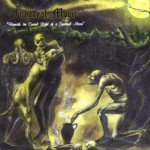 Easily one of the most obscure and horrifying symphonies ever composed on the Mexican soil, the drug-addled, hypnotic and twisted black ambient scenarios of Funereal Moon despite the Guttural Records connection bear little resemblance to the warm crusted ground of Xibalba or the quasi-Nordic beauty of Avzhia – or any other formal black metal for that matter. If you have heard some of the unsane abstractions concocted by the French black legionnaires or Texan congregation of Equimanthorn on their mostly private tape mayhem, you might have an inkling of what to expect. Subsonar synths throb, cheap reverbs multiply growling voices to comical intensities, layers merge into a ritual cacoon of violent concentration in a macabre crescendo of not-so-subtly erotic (especially in the hideous “Vrykolkas (White Irish Eyes)” backed by whiplashes and female moans) palpitations begging for release through the dagger of the proponent. When synthetic guitars and mechanically stumbling drumscapes kick in to approximate occult metal architectures, the effect is close to what Black Funeral evoked years later in the industrial black metal revivals of “Az-i-Dahak” and “Ordog” – here achieved without any excess stylistic measures, simply thrown in your face in the name of blasphemy and contempt. Cheesy and immature to the extreme, but at the same time mercilessly compelling like an exploitation movie, these desolate voices of sorcery seem somehow one of the closest to the alienation and horror of the Mexican “Nocturnos dominion”, where immoving cacti stand upon the chaparral as guardians of twilight and coyotes raise their chant to the bloodred moon, all ensorcelled by the forgotten spells of Tulan sorcerers.
Easily one of the most obscure and horrifying symphonies ever composed on the Mexican soil, the drug-addled, hypnotic and twisted black ambient scenarios of Funereal Moon despite the Guttural Records connection bear little resemblance to the warm crusted ground of Xibalba or the quasi-Nordic beauty of Avzhia – or any other formal black metal for that matter. If you have heard some of the unsane abstractions concocted by the French black legionnaires or Texan congregation of Equimanthorn on their mostly private tape mayhem, you might have an inkling of what to expect. Subsonar synths throb, cheap reverbs multiply growling voices to comical intensities, layers merge into a ritual cacoon of violent concentration in a macabre crescendo of not-so-subtly erotic (especially in the hideous “Vrykolkas (White Irish Eyes)” backed by whiplashes and female moans) palpitations begging for release through the dagger of the proponent. When synthetic guitars and mechanically stumbling drumscapes kick in to approximate occult metal architectures, the effect is close to what Black Funeral evoked years later in the industrial black metal revivals of “Az-i-Dahak” and “Ordog” – here achieved without any excess stylistic measures, simply thrown in your face in the name of blasphemy and contempt. Cheesy and immature to the extreme, but at the same time mercilessly compelling like an exploitation movie, these desolate voices of sorcery seem somehow one of the closest to the alienation and horror of the Mexican “Nocturnos dominion”, where immoving cacti stand upon the chaparral as guardians of twilight and coyotes raise their chant to the bloodred moon, all ensorcelled by the forgotten spells of Tulan sorcerers.
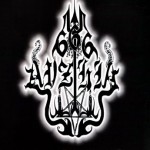 From out of Mexico City’s chaotic and concrete urban sprawl arose this monumental Black Metal album as a statement of militaristic and natural order, inextricably linked as they would have been to the inhabitants of Tenochtitlan, the former capital of the great Aztec civilisation. Avzhia here develop the ritualistic and prolonged, ‘Pentagram’ by Gorgoroth-like phrasing of ‘Dark Emperors’ into even grander arrangements panning across vast battlefields and landscapes, bringing keyboards to the foreground for a sense of epic melody that resembles Graveland’s ‘Creed of Iron’ being guided by the expansive compositions of Emperor. There is none of the lead guitarwork that’s central to ‘In The Nightside Eclipse’ in forming esoteric musical themes, so the symphonic majesty of ‘The Key of Throne’ is simply and effectively accompanied by the fullness of sweeping powerchords and this approach brings a lot of primitive but intelligent flavours to the sound and the composition as far as bringing the themes to a successful conclusion is concerned. When stripping away the keyboards from the guitars to reveal the simple beauty of an idea, almost Punk-like riffs of the sort Impaled Nazarene are infamous for are unleashed in a warlike clash of thought and action. With the inclusion of the keyboard, there’s a sense that Avzhia might have heard Skepticism’s ‘Stormcrowfleet’ as the same feeling of ethereal beauty and earthy power is evoked. The bass plays an important role as well, during the drawn-out riffing, reminiscent of Primordial’s ‘A Journey’s End’, folkier parts can be heard echoing underneath like a dormant race building its power to strike, and strike it does as the full instrumental ensemble combines to reiterate this idea. Perhaps this is Avzhia’s vision, like the Norwegian Black Metallers once possessed, of Satan’s adversarial power conquering the modern, Christian lands, once again appeasing with the blood of fallen enemies the ancient gods who had long ago died for their race.
From out of Mexico City’s chaotic and concrete urban sprawl arose this monumental Black Metal album as a statement of militaristic and natural order, inextricably linked as they would have been to the inhabitants of Tenochtitlan, the former capital of the great Aztec civilisation. Avzhia here develop the ritualistic and prolonged, ‘Pentagram’ by Gorgoroth-like phrasing of ‘Dark Emperors’ into even grander arrangements panning across vast battlefields and landscapes, bringing keyboards to the foreground for a sense of epic melody that resembles Graveland’s ‘Creed of Iron’ being guided by the expansive compositions of Emperor. There is none of the lead guitarwork that’s central to ‘In The Nightside Eclipse’ in forming esoteric musical themes, so the symphonic majesty of ‘The Key of Throne’ is simply and effectively accompanied by the fullness of sweeping powerchords and this approach brings a lot of primitive but intelligent flavours to the sound and the composition as far as bringing the themes to a successful conclusion is concerned. When stripping away the keyboards from the guitars to reveal the simple beauty of an idea, almost Punk-like riffs of the sort Impaled Nazarene are infamous for are unleashed in a warlike clash of thought and action. With the inclusion of the keyboard, there’s a sense that Avzhia might have heard Skepticism’s ‘Stormcrowfleet’ as the same feeling of ethereal beauty and earthy power is evoked. The bass plays an important role as well, during the drawn-out riffing, reminiscent of Primordial’s ‘A Journey’s End’, folkier parts can be heard echoing underneath like a dormant race building its power to strike, and strike it does as the full instrumental ensemble combines to reiterate this idea. Perhaps this is Avzhia’s vision, like the Norwegian Black Metallers once possessed, of Satan’s adversarial power conquering the modern, Christian lands, once again appeasing with the blood of fallen enemies the ancient gods who had long ago died for their race.
Demogorgon: To analize this album, well, it contains too few tracks but each one of them satisfies us and yes, there’s both ideological and musical evolution – but as always, firmly obscure roots that define Avzhia.
As the populist variants of Nordic Black Metal and Gothenburg Death Metal grew in volume and number, so did the attempts at “romantic” or “psychedelic” sound in Mexico, mostly misguided through a lack of coherence and real inspiration beyond the mundane wish to belong in a clandestine good-looking cult of gothic clothes; an unfortunate occurrence of middle class commercial mentality in a society otherwise unnaturally divided and polarized (the shades of civil war never left, nor the even deeper bloody roots of muerte culture). Prominent American label Full Moon Productions signed Argentum for their one interesting album, “Ad Interitum Funebrarum”, while many in the vein of cloak-and-hood-gothic Demolish and the rather interesting Black Vomit toiled in obscurity. The Chasm, a masterful brainchild of Cenotaph alumnus Daniel Corchado, advanced from Mexican beginnings to dominate the forthcoming decade (now in Chicago) with a progressive (structural, non-gimmick) Death Metal tour de force. Another relocator was the grinding, blasphemous and simplistic “bonehead black metal” group Morbosidad, whose several drummers died in accidents.
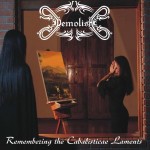 To be honest, and there is a reason to be because we are not here to create empty hype and false promise, most of Mexican metal of the 1990′s was comprised of worthless copies aping whatever neo-gothic metal trend was looming in the world at large and it’s nowhere more clear than in this compilation of the successive 1995 and 1997 demos of Demolish and the progression from mediocre to bad influence. The bouncy, hyper-emotional and lethargic black groove of the first part “Reinforcement Laments from the Lamb” (That’s just about what I emitted halfway through this concoction!?) is an incriminating example of heavy metal dressed as black metal, enveloped in saccharine keyboards which occasionally would inspire a vomitous reflex from even that top hatted abortion of Dimmu Borgir (old). Suffice to say there’s a lot of Anne Rice-y occult romance and affective screaming and bombast with hardly any musical surprise or moment of interest, as they would probably distract from the singular intent of securing the attention of fat gothic Wiccan bitches. I guess you might be into this if Covenant’s mercifully forgotten “In Times Before the Light” or earlier Cradle of Filth was the best thing that ever happened to you in black metal. The older more creeping old school death metal influenced occult metal in the earlier recorded second part “Artis Cabalisticae” includes violent moments of hope, but not enough to convince any further than, say, that first EP from Portuguese womanizers Moonspell. Hardly any Toltec spirit here, so move along.
To be honest, and there is a reason to be because we are not here to create empty hype and false promise, most of Mexican metal of the 1990′s was comprised of worthless copies aping whatever neo-gothic metal trend was looming in the world at large and it’s nowhere more clear than in this compilation of the successive 1995 and 1997 demos of Demolish and the progression from mediocre to bad influence. The bouncy, hyper-emotional and lethargic black groove of the first part “Reinforcement Laments from the Lamb” (That’s just about what I emitted halfway through this concoction!?) is an incriminating example of heavy metal dressed as black metal, enveloped in saccharine keyboards which occasionally would inspire a vomitous reflex from even that top hatted abortion of Dimmu Borgir (old). Suffice to say there’s a lot of Anne Rice-y occult romance and affective screaming and bombast with hardly any musical surprise or moment of interest, as they would probably distract from the singular intent of securing the attention of fat gothic Wiccan bitches. I guess you might be into this if Covenant’s mercifully forgotten “In Times Before the Light” or earlier Cradle of Filth was the best thing that ever happened to you in black metal. The older more creeping old school death metal influenced occult metal in the earlier recorded second part “Artis Cabalisticae” includes violent moments of hope, but not enough to convince any further than, say, that first EP from Portuguese womanizers Moonspell. Hardly any Toltec spirit here, so move along.
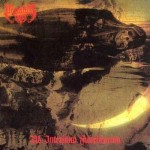 Hooded Wallachians prowl the crenellated wall tops of ancient castles, Mediterranean bards wield their lutes as metallic Paco de Lucias and some thin, wimpy goth called Philix Pherboreon (is this a Harry Potter character?) attacks the cheap Roland determined to reign as nocturnal dominion over every Mexican black metal wannabe circa 1996. With surprising class and flair, Argentum’s hymns to darkness remind one that the atmospheres descended part from “The Principle of Evil Made Flesh” and part from “Goetia”, might not stand the highest in today’s black metal elitists’ repertoire but today, sounds more exciting and unique because of their severe emotional and dimensional indulgement in a nearly forgotten quest – to compose music, not meaningless random noise or robotic riff patterns. The band is undoubtedly at their peak with the sustained moods of “Enter an Encysted Hibernation” and other slower pieces such as “The Serpent’s Lament” which traces the ethereal scents of the black lotus much as My Dying Bride would have if they had obsessed with black metal during the time of their first album. When the bands decides to thrash onwards in speed, and yet retain the “gloomy” keyboards in “Mortuus Infradaemoni”, it’s undoubtedly a bad choice, sounding ridiculous and swamping their intentions of occult credibility observed with “Lections on texts including English, latin, Catalan, Creol, and Ancientdark Language & Spanish”. The question mark imprinted by this upon one’s brain is better than mere satisfaction, though.
Hooded Wallachians prowl the crenellated wall tops of ancient castles, Mediterranean bards wield their lutes as metallic Paco de Lucias and some thin, wimpy goth called Philix Pherboreon (is this a Harry Potter character?) attacks the cheap Roland determined to reign as nocturnal dominion over every Mexican black metal wannabe circa 1996. With surprising class and flair, Argentum’s hymns to darkness remind one that the atmospheres descended part from “The Principle of Evil Made Flesh” and part from “Goetia”, might not stand the highest in today’s black metal elitists’ repertoire but today, sounds more exciting and unique because of their severe emotional and dimensional indulgement in a nearly forgotten quest – to compose music, not meaningless random noise or robotic riff patterns. The band is undoubtedly at their peak with the sustained moods of “Enter an Encysted Hibernation” and other slower pieces such as “The Serpent’s Lament” which traces the ethereal scents of the black lotus much as My Dying Bride would have if they had obsessed with black metal during the time of their first album. When the bands decides to thrash onwards in speed, and yet retain the “gloomy” keyboards in “Mortuus Infradaemoni”, it’s undoubtedly a bad choice, sounding ridiculous and swamping their intentions of occult credibility observed with “Lections on texts including English, latin, Catalan, Creol, and Ancientdark Language & Spanish”. The question mark imprinted by this upon one’s brain is better than mere satisfaction, though.
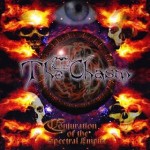 The Chasm’s fifth album in a productive and populated discography continues their journey through the astralic realms of the dead, traversing a heterogenous soundscape much like the cultural topography of Mexico itself. Where Corchado’s work with Cenotaph was inspired by the rhythmic power of Swedish Death Metal, this album is more in tune with not only the melodicism of old troops from Gotenborg like At The Gates, Unleashed and Dark Tranquility but the morbid disharmony of Norsk Black Metal classics ‘De Mysteriis Dom Sathanas’ and ‘Under A Funeral Moon’, which owe much to the Latin American primitivism of Sepultura that also goes into the sound of ‘Conjuration of the Spectral Empire’. The expansive melting pot of sounds and styles is guided by Shamanic visions that peer into the inpenetrable abode of Mictlantehcuhtli, coloured and contrasted by the opposing principles that intersect this psychic plane, giving this album a vast sense of direction proportional to the longing for ancient wisdom in a world torn from the continuum of tradition. From the very outset of ‘Conjuration…’, the winds of the Chihuahuan desert are conjured by guitars and effects, bringing to mind the main theme composed by Ennio Morricone for the nihilistic Western classic, ‘The Good, The Bad and The Ugly’. Each song develops from or towards a single, clear and always beautifully poignant melodic idea, fusing the structural framework of early Dismember with the technique of Technical Death Metal bands like Cynic and Atrocity and their insistence on rhythmic and melodic interaction, although the use of inverted powerchords amidst the South American chaos and Melodeath flourishes, to create a more sombre atmosphere recalls the obscure Black Metal of Mütiilation’s second album. The Chasm avoid the pitfalls of Melodic Death Metal by having this focus, removing themselves from the tendency of bands to resemble a Scandinavian folk riff-salad with no conceptual reasoning behind it. Instead, songs qualify as movements and the phrasal development therein demonstrates an awareness of Classical music that restores the grand aspirations of the Swedes and therefore stands alongside the likes of ‘The Red In The Sky Is Ours’ and ‘Like An Everflowing Stream’ as monuments to the primal, cosmic darkness of our true, inner nature.
The Chasm’s fifth album in a productive and populated discography continues their journey through the astralic realms of the dead, traversing a heterogenous soundscape much like the cultural topography of Mexico itself. Where Corchado’s work with Cenotaph was inspired by the rhythmic power of Swedish Death Metal, this album is more in tune with not only the melodicism of old troops from Gotenborg like At The Gates, Unleashed and Dark Tranquility but the morbid disharmony of Norsk Black Metal classics ‘De Mysteriis Dom Sathanas’ and ‘Under A Funeral Moon’, which owe much to the Latin American primitivism of Sepultura that also goes into the sound of ‘Conjuration of the Spectral Empire’. The expansive melting pot of sounds and styles is guided by Shamanic visions that peer into the inpenetrable abode of Mictlantehcuhtli, coloured and contrasted by the opposing principles that intersect this psychic plane, giving this album a vast sense of direction proportional to the longing for ancient wisdom in a world torn from the continuum of tradition. From the very outset of ‘Conjuration…’, the winds of the Chihuahuan desert are conjured by guitars and effects, bringing to mind the main theme composed by Ennio Morricone for the nihilistic Western classic, ‘The Good, The Bad and The Ugly’. Each song develops from or towards a single, clear and always beautifully poignant melodic idea, fusing the structural framework of early Dismember with the technique of Technical Death Metal bands like Cynic and Atrocity and their insistence on rhythmic and melodic interaction, although the use of inverted powerchords amidst the South American chaos and Melodeath flourishes, to create a more sombre atmosphere recalls the obscure Black Metal of Mütiilation’s second album. The Chasm avoid the pitfalls of Melodic Death Metal by having this focus, removing themselves from the tendency of bands to resemble a Scandinavian folk riff-salad with no conceptual reasoning behind it. Instead, songs qualify as movements and the phrasal development therein demonstrates an awareness of Classical music that restores the grand aspirations of the Swedes and therefore stands alongside the likes of ‘The Red In The Sky Is Ours’ and ‘Like An Everflowing Stream’ as monuments to the primal, cosmic darkness of our true, inner nature.
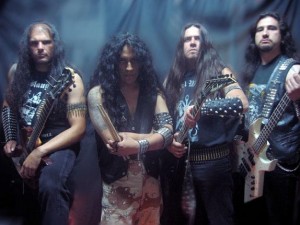 Through the international contact and amalgamation of principles brought about by simultaneously World Wide Web access and the extent of educating the young generation in English language (movies, videogames and music being elemental and important here) the new millennium saw Mexico closer than ever to its northern neighbour. Youth factions such as the hated “emo” culture would have been out of place in 1980′s conservative Mexico, but despite clashes between groups they are widely approved today. All in all, it seemed to weaken the unique characteristic of the Mexican underground which was the tough rebelliousness in speed metal and occult/mystical lyrical tendency in Death Metal. In other words, too many corpse painted posers (such as the unending repertoire of Azermedoth Records) and uneventful, funny “goregrinders” (Disgorge, the original of this style, still continues to exist) infected the underground.
Through the international contact and amalgamation of principles brought about by simultaneously World Wide Web access and the extent of educating the young generation in English language (movies, videogames and music being elemental and important here) the new millennium saw Mexico closer than ever to its northern neighbour. Youth factions such as the hated “emo” culture would have been out of place in 1980′s conservative Mexico, but despite clashes between groups they are widely approved today. All in all, it seemed to weaken the unique characteristic of the Mexican underground which was the tough rebelliousness in speed metal and occult/mystical lyrical tendency in Death Metal. In other words, too many corpse painted posers (such as the unending repertoire of Azermedoth Records) and uneventful, funny “goregrinders” (Disgorge, the original of this style, still continues to exist) infected the underground.
Eduardo: Certainly this isn’t an easy way to get money, fame or groupies. If that’s what a band is looking for, it’s just a bunch of shitty losers. You should work because you love what you are doing, and doing this just to be a sell out and gain a living from the people who manage you is a completely Shitty attitude. Underground Death Metal is for true warriors who eat, shit and talk metal, and love it as a son! To know all the underground beasts that still dwell on the catacombs of the worldwide scene and support them as brothers… In Europe it’s awesome how the Metal way of life is still the way for the chosen to die with their boots on. Metal in Europe is bigger than other music styles without the need of being in a popularity contest. Metal is for metalheads and that’s it.
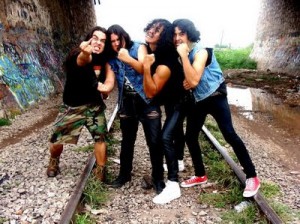 On the other hand, in Mexico, Metal has been taken as a trend. Every single metal subgenre such as death, thrash, black or speed has been invaded by stupid bastards with childish ideas and only commercial purposes. This is not only certain individuals, as even labels have mutated into money makers – signing bands created to give a commercial and false name to metal. They think that they know everything and even take the image of the old gods as costumes. Please! All those denim jackets full of patches from Possessed and Slayer, just to name a few, worn by kids of 18 years and claiming to be “thrash ’til death”! Jajajajajajajaja! Or the new trend of “old school death metal”? Please, when those bands were out, nobody cared about them! But now everybody is looking for those bands, jajajaja! Only the true ones we’ll meet at the end of the road. The other ones will escape to the next trend, because they never really belonged to us!
On the other hand, in Mexico, Metal has been taken as a trend. Every single metal subgenre such as death, thrash, black or speed has been invaded by stupid bastards with childish ideas and only commercial purposes. This is not only certain individuals, as even labels have mutated into money makers – signing bands created to give a commercial and false name to metal. They think that they know everything and even take the image of the old gods as costumes. Please! All those denim jackets full of patches from Possessed and Slayer, just to name a few, worn by kids of 18 years and claiming to be “thrash ’til death”! Jajajajajajajaja! Or the new trend of “old school death metal”? Please, when those bands were out, nobody cared about them! But now everybody is looking for those bands, jajajaja! Only the true ones we’ll meet at the end of the road. The other ones will escape to the next trend, because they never really belonged to us!
This is not to say Mexico’s soil doesn’t still bleed black at the desolate fullmoon hours. Old bands all the way to Luzbel are still sporadically active and the promised Avzhia offering “In My Domains” is one of our most awaited forthcoming releases in several years. Infinitum Obscure featuring The Chasm’s Roberto Lizárraga is a throwback to the days when death metallers weren’t afraid to expose religious mysticism, supernatural fervour and psychological “dark” addiction in one package, while Hacavitz and Yaotl Mictlan bring back the Aztec themes but do not retain the climactic level of Xibalba’s “Unique Mayan Black Metal”. Satanists who preach the ontology of Self and the theurgies of netherworlds remain plentiful, Denial and Necroccultus (both featuring scene veterans such as Supplicium’s Isaíah Huerta, Shub Niggurath’s Eduardo and Cenotaph’s Oscar Clorio) being probably the best of the bunch, and also for example Ravager enjoys wide exposure and releases on prominent European metal labels (while Avzhia sadly toils without a record deal).
Demogorgon: Look out for “In My Domains” – this album is strong in itself, riff by riff. It’s raw while plentiful in melodic interludes, grim voices and depressive atmospheres. We do what satisfies us, then other metalheads can satisfy themselves with Avzhia’s music. It’s great to meet true people when we do shows. Avzhia is always going to exist in the dark side of true Black Metal and we will keep doing our work full of darkness of our Lord Sathanas. Grim, cold, melancholic and depressive are characteristics of what Avzhia is! Only the true emperors live, eternal life to Black Metal! See you soon wherever you are… on “In My Domains” tour.
Marco: We just like the sound of a good song, no matter what style it is. As long as it reflects honesty and passion, clearly away from the rules of the mainstream. We have made this music since the ’90s, and still I can have ideas for a song that sounds great, even when there’s hundreds of bands around. You just need to find the right notes and stay focused on the path. This music has been really distorted from the original roots. What makes it worth I don’t know, but maybe just to know the right path is still there and the fact that we’re contributing to it. I think it depends on the integrity and personal convictions everybody has. It’s all part of finding personal freedom or spiritual release.
Joel: We are satisfied with the music that we did. It represents the things we felt at that time, and it’s a real condition that still prevails. Songwriting for us has been a natural change in the evolution of the band, as new songs have the seal of Mortuary but are definitely not the same. We have an evolutionary progress, you’ll see.
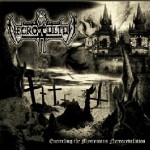 On the footsteps of Irapuato bands such as the Paradise Lost influenced Supplicium and the Chasm-ic A Perpetual Dying Mirror the mad inverters of music decided to go for an irate, warlike sound most akin to Vader’s most brutal incantations. For a fan of Sargatanas and earlier Shub-Niggurath, there are plenty of morbid mental cavities to succumb into in atmospheric death-thrashing of “Mirage of Death” or the more Northern sound of “Descent To Requiem”, actually close to Absu’s early efforts in mingling Swedish death metal and the more ritualistic and sensual sound of ambient black. As regrettably is the case with neo-death metal, there is a great temptation to succumb into a patterned safe manifestation of used riffs, which no longer have the capacity to shock or inspire but the most fresh and innocent listeners. One can only imagine what impact “The Necrosphere Within” would have had in 1987, but the lack of a honest exploration of death metal horizons arouses the question how long can “formulaic death metal” be “death metal” at all, since the genre was incepted to scare the listener into an acceptance of devious un-life. In a hodgepodge of riffs, the social instinct takes over and the music loses the “death-feeling”. A slight rescue is obtained by preserving much of the doom character of the members’ earlier bands, as well as wicked and proficient guitar solos. In total, “Encircling the Mysterious Necrorevelation” is far from bad, but it also lacks the essential magic and forceful intellect characteristic of Mexican metal peaks.
On the footsteps of Irapuato bands such as the Paradise Lost influenced Supplicium and the Chasm-ic A Perpetual Dying Mirror the mad inverters of music decided to go for an irate, warlike sound most akin to Vader’s most brutal incantations. For a fan of Sargatanas and earlier Shub-Niggurath, there are plenty of morbid mental cavities to succumb into in atmospheric death-thrashing of “Mirage of Death” or the more Northern sound of “Descent To Requiem”, actually close to Absu’s early efforts in mingling Swedish death metal and the more ritualistic and sensual sound of ambient black. As regrettably is the case with neo-death metal, there is a great temptation to succumb into a patterned safe manifestation of used riffs, which no longer have the capacity to shock or inspire but the most fresh and innocent listeners. One can only imagine what impact “The Necrosphere Within” would have had in 1987, but the lack of a honest exploration of death metal horizons arouses the question how long can “formulaic death metal” be “death metal” at all, since the genre was incepted to scare the listener into an acceptance of devious un-life. In a hodgepodge of riffs, the social instinct takes over and the music loses the “death-feeling”. A slight rescue is obtained by preserving much of the doom character of the members’ earlier bands, as well as wicked and proficient guitar solos. In total, “Encircling the Mysterious Necrorevelation” is far from bad, but it also lacks the essential magic and forceful intellect characteristic of Mexican metal peaks.
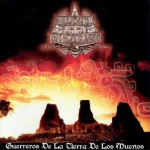 Yaotl Mictlan in a similar respect to Xibalba borrow stylistically from European black metal. Their debut full-length contains a battle-hardened ferocity not unlike Graveland’s ‘Thousand Swords’, and in attitude resembles a less esoteric version of the classic Polish black metal acts. Musically this has the precision and sharp execution of Enslaved’s ‘Frost’ album, but with is overlaid with meandering, arpeggiated guitar forms that bring to mind a more rock-inclined take on Burzum’s first album. True to backdrop, the band bring elements unique to their Mexican heritage to the fore, in the form of wind instruments, percussives and acoustic guitar passages that are distinct within flamenco music. This is no doubt a unique approach, and firmly grasps a sound it can call it’s own, though lacking the cohesion and charge to put them in the same tier as Xibalba or Avzhia. As a result of this, ‘Guerreros De La Tierra De Los Muertos’ comes across as a tiresome listen, but not without the occasional flourish of excellence. Now signed with Candlelight records, it will be interesting to see what results their next release will artistically yield, as there are moments of promise here.
Yaotl Mictlan in a similar respect to Xibalba borrow stylistically from European black metal. Their debut full-length contains a battle-hardened ferocity not unlike Graveland’s ‘Thousand Swords’, and in attitude resembles a less esoteric version of the classic Polish black metal acts. Musically this has the precision and sharp execution of Enslaved’s ‘Frost’ album, but with is overlaid with meandering, arpeggiated guitar forms that bring to mind a more rock-inclined take on Burzum’s first album. True to backdrop, the band bring elements unique to their Mexican heritage to the fore, in the form of wind instruments, percussives and acoustic guitar passages that are distinct within flamenco music. This is no doubt a unique approach, and firmly grasps a sound it can call it’s own, though lacking the cohesion and charge to put them in the same tier as Xibalba or Avzhia. As a result of this, ‘Guerreros De La Tierra De Los Muertos’ comes across as a tiresome listen, but not without the occasional flourish of excellence. Now signed with Candlelight records, it will be interesting to see what results their next release will artistically yield, as there are moments of promise here.
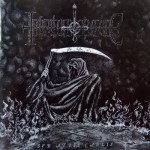 Often referred to as a clone of The Chasm, Infinitum Obscure do indeed share more than a few identifiable traits with their fellow Mexicans, most notably the tremolo picking and those galloping triplets that lend so much power and vigour to the rhythm. There is something that ultimately separates the two bands, however; that being the conceptual direction each band embarks upon: while The Chasm invokes a strong, dark atmosphere that emphasizes the mystical, esoteric passage through some evanescent portal, Infinitum Obscure are far more direct in organizing a forceful rhythm in such a way as to remain concentrated on a single, grounded idea, often reinforcing this focus by frequently returning to familiar themes. So, while their main inspiration might take flight into stranger landscapes, Infinitum Obscure are quite content to portray the lost chasms of this world with an evocative atmosphere of imaginative melodies and, most importantly, direct and uncompromising riffing. On ‘Sub Atris Caelis’, Infinitum Obscure’s sophomore album, these points are emphasized more clearly, making it their definitive accomplishment to date. The need to shake off the burden of being a mere clone band is eminently present; the band tasks itself with creating something altogether their own, resulting in a real sense of the epic emerging from the patterns interwoven throughout the record; each song is striking at something profound, grasping wildly in the search for solidarity. The consequence of these compulsions is an album that sounds like it is still very much in The Chasm camp; while really it has taken several progressive leaps forward, leaving us with a work of art brimming with the self-confidence of autonomy.
Often referred to as a clone of The Chasm, Infinitum Obscure do indeed share more than a few identifiable traits with their fellow Mexicans, most notably the tremolo picking and those galloping triplets that lend so much power and vigour to the rhythm. There is something that ultimately separates the two bands, however; that being the conceptual direction each band embarks upon: while The Chasm invokes a strong, dark atmosphere that emphasizes the mystical, esoteric passage through some evanescent portal, Infinitum Obscure are far more direct in organizing a forceful rhythm in such a way as to remain concentrated on a single, grounded idea, often reinforcing this focus by frequently returning to familiar themes. So, while their main inspiration might take flight into stranger landscapes, Infinitum Obscure are quite content to portray the lost chasms of this world with an evocative atmosphere of imaginative melodies and, most importantly, direct and uncompromising riffing. On ‘Sub Atris Caelis’, Infinitum Obscure’s sophomore album, these points are emphasized more clearly, making it their definitive accomplishment to date. The need to shake off the burden of being a mere clone band is eminently present; the band tasks itself with creating something altogether their own, resulting in a real sense of the epic emerging from the patterns interwoven throughout the record; each song is striking at something profound, grasping wildly in the search for solidarity. The consequence of these compulsions is an album that sounds like it is still very much in The Chasm camp; while really it has taken several progressive leaps forward, leaving us with a work of art brimming with the self-confidence of autonomy.
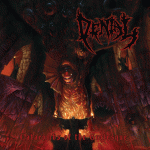 Some of the most impressive new death metal from anywhere in the world, this churning, impactful and bodily animalistic accomplishment from former Cenotaph and Shub Niggurath madmen is not a joke. What Cannibal Corpse always intended with their chromatic, bass-heavy and relentlessly rhythmic one dimensional stream of riff becomes an amalgamation of melodic motifs and devastatingly experimental squeals in the hands of these perpetrators, as the background noise boils and envelops much as the classic “Onward to Golgotha” did, while the constant, FX enhanced, ridiculously monstrous voice of Ivan Velazquez intones all the perspiring tension of underworld nexus, the twilight threshold of life and death where sorcerers and demons whisper secrets to the warrior, offering true and false guidance, representing the violent archaic generations that waged war on Mexico’s bloody soil and continue to make many lives into living hell. I have alluded to the monotone nature, which is probably intentional and it hardly detracts from enjoying this cryptic abomination for further and further listenings, as the heights such as “The Pestilent Pits of Disgrace” or “Necrotic Invocations” are deceptively complex mazes of chords and melodies disguised as straightforward infernal metal by the tight manner of production and the guitarists’ sparse use of leads or interludes. Most importantly, the unrelenting hopelessness of these afterworld visions will force the listener to abandon the illusion of safety and immortality that makes the common man succumb to faulty, immoral decisions from day to day, thus achieving one of the highest principles of death metal: mental change (abomination). One would hesitate to lift such a recent work to the hallowed pantheon of Cenotaph and Mortuary after a brief listening span, but if a candidate is chosen from this tournée, this must be it.
Some of the most impressive new death metal from anywhere in the world, this churning, impactful and bodily animalistic accomplishment from former Cenotaph and Shub Niggurath madmen is not a joke. What Cannibal Corpse always intended with their chromatic, bass-heavy and relentlessly rhythmic one dimensional stream of riff becomes an amalgamation of melodic motifs and devastatingly experimental squeals in the hands of these perpetrators, as the background noise boils and envelops much as the classic “Onward to Golgotha” did, while the constant, FX enhanced, ridiculously monstrous voice of Ivan Velazquez intones all the perspiring tension of underworld nexus, the twilight threshold of life and death where sorcerers and demons whisper secrets to the warrior, offering true and false guidance, representing the violent archaic generations that waged war on Mexico’s bloody soil and continue to make many lives into living hell. I have alluded to the monotone nature, which is probably intentional and it hardly detracts from enjoying this cryptic abomination for further and further listenings, as the heights such as “The Pestilent Pits of Disgrace” or “Necrotic Invocations” are deceptively complex mazes of chords and melodies disguised as straightforward infernal metal by the tight manner of production and the guitarists’ sparse use of leads or interludes. Most importantly, the unrelenting hopelessness of these afterworld visions will force the listener to abandon the illusion of safety and immortality that makes the common man succumb to faulty, immoral decisions from day to day, thus achieving one of the highest principles of death metal: mental change (abomination). One would hesitate to lift such a recent work to the hallowed pantheon of Cenotaph and Mortuary after a brief listening span, but if a candidate is chosen from this tournée, this must be it.
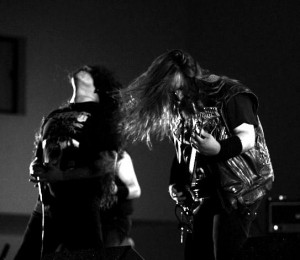 It can be said that while Mexico’s metal offerings are not especially plentiful, they are generally interesting and spirited while the best of the country are just about the best these genres have ever seen, on an international scale. Mexicans’ natural groundedness coupled with the mystical tendencies is an excellent standpoint for witnessing the oblique directions of Death and Black Metal from an unpretentious, furious, “Luciferian” angle. It’s almost a surprise there isn’t so much more of it, even though I’m surprised if any reader of this article gets a sense of scarcity regarding items of interest in Mexican metal. So, that being said, it’s about time we leave you to contemplate the mysteries of Toltecs and Satan in the consummation of the extreme, Romantic and evil compositional systems of these modern Mexican warriors and dreamers.
It can be said that while Mexico’s metal offerings are not especially plentiful, they are generally interesting and spirited while the best of the country are just about the best these genres have ever seen, on an international scale. Mexicans’ natural groundedness coupled with the mystical tendencies is an excellent standpoint for witnessing the oblique directions of Death and Black Metal from an unpretentious, furious, “Luciferian” angle. It’s almost a surprise there isn’t so much more of it, even though I’m surprised if any reader of this article gets a sense of scarcity regarding items of interest in Mexican metal. So, that being said, it’s about time we leave you to contemplate the mysteries of Toltecs and Satan in the consummation of the extreme, Romantic and evil compositional systems of these modern Mexican warriors and dreamers.
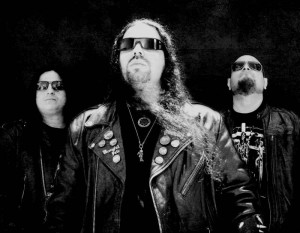 Marco: I think this music is very individual and very personal, and it can take you to a spiritual level, if you listen carefully. Our ancient cultures are based on spirituality, so that’s the point in our just making this weird mix. One song can take you to the top of the pyramids, and reach for the skies, and another one could take you to a scenario of a war against the conquerors. In the end it’s all about finding your own roots, it’s some kind of, another, resource to open your eyes and to step away from the enslavement of social rules and moral unconsciousness (Christian superstition included). In the end the people in power need a dormant society, so they can keep on corrupting, spreading corruption in every corner, and people are just playing the game. Only the connection to your roots will set you free.
Marco: I think this music is very individual and very personal, and it can take you to a spiritual level, if you listen carefully. Our ancient cultures are based on spirituality, so that’s the point in our just making this weird mix. One song can take you to the top of the pyramids, and reach for the skies, and another one could take you to a scenario of a war against the conquerors. In the end it’s all about finding your own roots, it’s some kind of, another, resource to open your eyes and to step away from the enslavement of social rules and moral unconsciousness (Christian superstition included). In the end the people in power need a dormant society, so they can keep on corrupting, spreading corruption in every corner, and people are just playing the game. Only the connection to your roots will set you free.
Joel: It’s a matter of self confidence in all the things we do, the feeling of greatness inside, the feeling of power, to reach new levels in the extreme brutal metal music we make! I’m not here to convince anyone to do anything, we are selected persons, we the whole scene… the others, the weak, must die!
Highest hails from Deathmetal.Org to Joel of Mortuary, Marco of Xibalba, Demogorgon of Avzhia, Eduardo of Necroccultus and last but not least Noe of Guttural Records for providing in-depth thoughts from the original perpetrators of real Mexican Metal! All of these bands are active so look out for forthcoming events of true massacre of the highest order.
No CommentsOnce you decided to come to Mexico you should have put all your petty fears away. Your decision to come should have vanquished them. You came because you wanted to come. That’s the warrior’s way.
– Don Juan Matus
Tags: zine-zines

Empyrean – Resurrection Engine: This is really one of the more musical things to cross my desk, but these guys are on heavy drugs if they think the audience for this genre will reward them. First they try to do some metalcore, which I’m now convinced is basically emo (an offshoot of hardcore, originally popularized by Fugazi, then becoming its own genre) with metal riffcraft: songs are three-riff, with one riff for verse, one for chorus, and one a melodic interlude that happens every third repetition of the others and can be expanded upon without moving the fret hand much. As a result, their straight-ahead songs have a very cookie-cutter sound; the band really shines when they take post-rock literally and make spacy ballads that are as much folk music or ambient in spirit as they are rock (think Agalloch), and are very removed from metal and doubly so from punk. When the band launches into this type of material, my ears perk up. It has been dumbed-down a bit for the high school audience, most of whom are still trying to decide whether to dedicate their suicide to a girl, or nuclear warfare. However, a great sense of harmony underlies these songs. I think the band should chuck all the metalcore/post-metal horseshit and just do what they do best, which is atmospheric folk post-rock like Hawkwind crossed with Laurie Anderson or Brian Eno. I say do it you boys because metalcore/emo-core is like all rock music a giant aggregation of styles, which ties you down with so many conventions that soon you’re just repeating cliches in “new, exciting” forms. Empyrean have a chance to break free. Do it.

Herpes – Doomsday: This band make facile doom/death with underscorings of punk, shadowing early work by Autopsy and Cianide. They like to launch into songs with rough skeletal riffs, then develop those with their most grind/punk-influenced verse riffs, and then rotate through variations on that theme before concluding with a circuitous “descending into the dungeon” style resonant doom riff. This makes for an engaging mixture: just hookish enough to lure you in, twisted and cryptographic enough to keep your attention, but mostly these old school death metal tunes just immerse you in a dark atmosphere and then let it soak in, saturating you in a morbidity and empty despair that mirrors the purposelessness of modern life. Some influences from modern metal appear in the riffing but not in the song structure or tempi. Percussion is excellent and to these ears sounds solidly in the Chris Reifert tradition, both energetic and holding back just enough to keep the sensation of being in the midst of a dirge. This 2010 demo portends a bright future for these French old schoolers.

Glaukom Synod – The Unspeakable Horror: The industrial/metal fusion has been attempted many times since the Killing Joke/Ministry/Godflesh triumvirate back in the late 1980s, and it rarely comes together as anything other than industrial music with random riffing. Glaukom Synod do better than that, setting up a form of droning EBM that takes the bounce and happy right out of its percussion not by eliminating swing but by hammering offbeats only as a secondary role to the abrupt rhythm of whatever sample or keyboard riff dominates even the drum machine. On the whole this is more on the Ministry side of things, with catchy beats and intermittent appearances by noisy guitars, but like many industrial projects has difficulty closing a song. Songs more than anything else just fade out, reminding this reviewer of the Godflesh reworking “Love and Hate in Dub” which was literally dub: sonic wallpaper that rotated past, gaining a little momentum each time, and then evaporated. It’s quite competent and makes for good listening if you like this range of styles.

Impureza – Inquisition – The demo years: If you like Nile, you’ll like Impureza, because they share an approach. Riffs are not fluid rapid motion using chords like notes in a melody, as occurs in death metal; riff development is not riffs counterpointing one another like a conversation that only makes sense after you’ve heard both parts, as in death metal. Instead, as with Nile, riffs are designed around a chord repeated at a particular rhythm with a few melodic offsets, more like progressive rock or guitar AOR (Rush) than death metal, but still quite musical — in fact, more conventionally recognizable as music. This album starts with classical-styled acoustic guitar and gradually integrates this grinding progressive indie death metal into the mix, then tears through over a dozen songs of high-intensity material. These songs are technical but not in the sense of “completely losing site of having a topic.” They’re a layer of technical on top of regular songwriting, which instead of distracting from the song fleshes it out and gives it more momentum. In a world of “technical death metal” that’s basically really repetitive, sweep-happy metalcore, Impureza is a refreshing blast of sanity.
No CommentsI want to say that I will start with the year 1984. Death metal had been around since 1984/1985 depending on who you ask. Mantas, Genocide, Deathstrike, Possessed, Slaughter and others had started years earlier and wanted to make music that made Slayer sound like Wham. “Black metal” had already started with Venom and Mercyful Fate. Then Bathory and Hellhammer came along. The term “death metal” was more widely used back then. Hell, there was even a compilation called “Death Metal” that had Running Wild and Helloween on it! Although I do dig both of those bands, they are hardly death metal! But the comp did have Hellhammer as well. So there was a back and forth there for a while. Even Sodom came along and called themselves “witching metal” to start off with! hahaha. But bands jumped back and forth and it was common for bands to be called both at times. Once Massacre, Repulsion, Death, and later Xecutioner, R.A.V.A.G.E., Morbid Angel and others started getting going with demo tapes flooding the underground, death metal was really starting to spawn. My comment about Slayer was a joke. Slayer upped the ante, so to speak, on playing faster and more aggressive. Slayer was influenced by D.R.I., Cryptic Slaughter and the fast hardcore punk that was coming out. Just like those hardcore bands became influenced by Slayer and other metal bands later on. So these death metal bands took the Slayer formula and made it even more aggressive and even faster and heavier than ever before. Black metal was kind of regulated to the same bands for a while. Possessed had the imagery of a black metal band, but were total death metal/thrash. Mercyful Fate broke up and Venom and Bathory started getting a little different in their musical direction.
Flash forward to 1989. I was already a couple years deep in the metal underground, but this is when I really got into the DEEP underground scene with the tape trading and fanzines and all of that. ALL KINDS of underground bands, that played different “styles” were all in the same fanzines and on the same compilation tapes. The black metal of Samael, Beherit and Blasphemy was featured right next to the death metal of Autopsy and Nihilist. The thrash of Merciless and Sindrome was right next to the grind of Agathocles and Anarchus. Everyone seemed to get along in one, big happy underground metal family! Then over the next few years, death metal then broke as a worldwide phenomenon. Everything either had a Swedish guitar sound or was recorded at Morrisound Studios with Scott Burns producing it. And had Dan Seagrave doing the artwork on the cover. Morbid Angel became mainstream, Carcass and Obituary started getting play on MTV more often. It seemed EVERYONE was familiar with “death metal”! But then weird stuff started happening with these bands. In Sweden and Finland, some of the old death metal bands started getting more rock or gothic (or both) with their music. Opeth and Katatonia followed suit with a progressive rock or gothic rock sound. Entombed did a horrible mix of death metal and rock and roll. Therion got weirder, then went all show-tunes. In Finland Abhorrence became Amorphis and ended up having more in common with classic rock. Disgrace went punk rock. Xysma went hippie. Convulse went “death and roll” (PUKE!) There was a disconnect that started and some bands and members of the scene felt slighted. But it was felt that death metal went cheesy as fuck. Some people grew tired of all of this, and decided to form a new thing. And the leader of this new movement was Euronymous of Mayhem.
Flamingly interesting post, on Metal Maniacs of all places.
No Comments